
Umrah
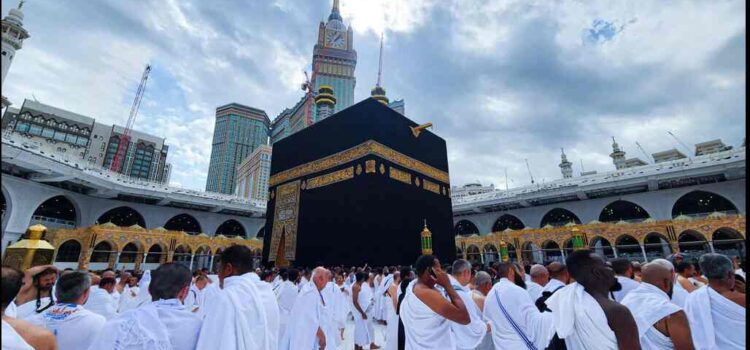
Umrah

Are you craving a memorable vacation that caters to the entire family’s interests, from leisure to education? Look no further than these incredible travel destinations for kids and adults both that promise an enriching experience. In this comprehensive guide, we’ll delve into the top travel destinations tailor-made for families, providing insights into each location’s unique offerings.
Family vacations are not just about relaxation; they are opportunities for learning, bonding, and creating lifelong memories. When traveling with kids, choosing the right destination is paramount. You want a place that balances fun, entertainment, and educational experiences. Fortunately, our world is brimming with such destinations.
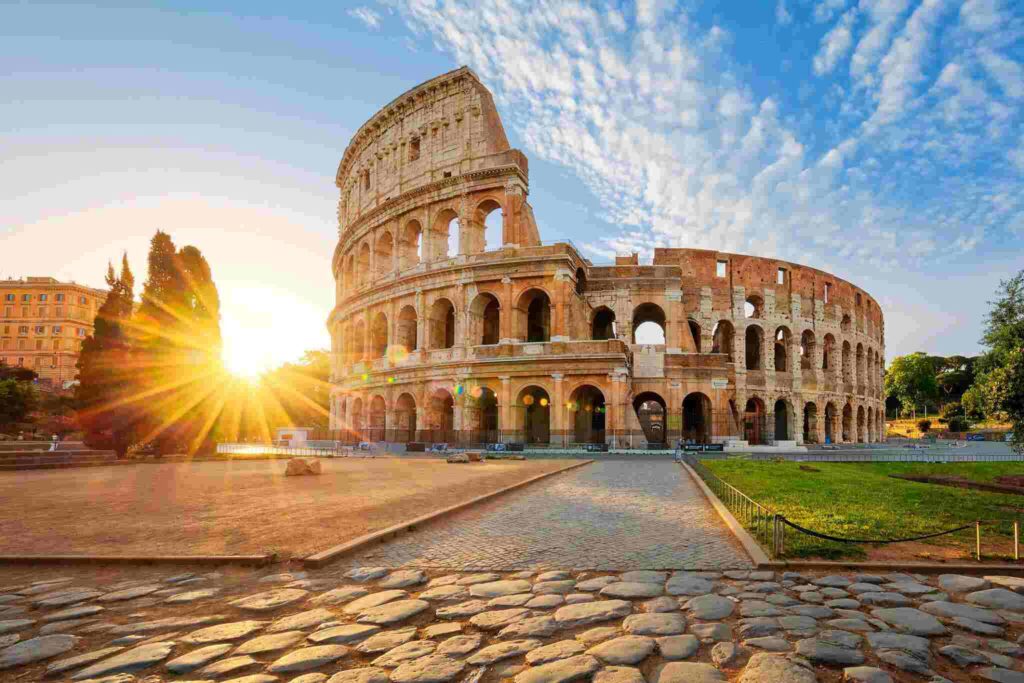
Rome, the eternal city, is a captivating destination where kids can step back in time and explore the grandeur of ancient civilizations. The Colosseum stands as an iconic testament to Roman engineering, while the Roman Forum provides a glimpse into daily life. Don’t miss a visit to Vatican City, where art and history collide.
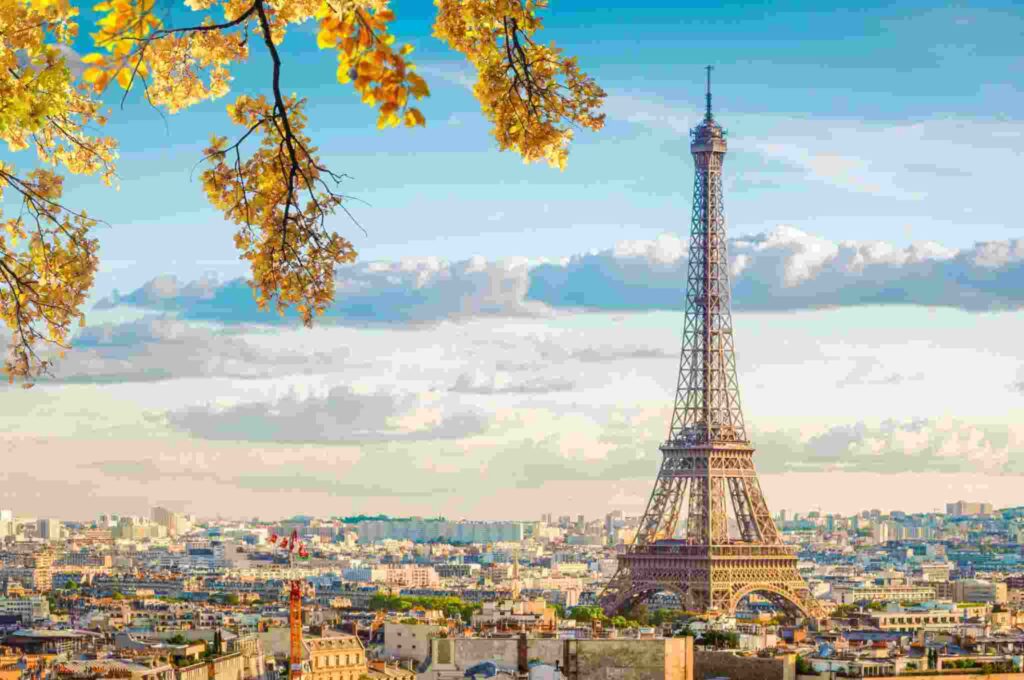
Paris, often called the City of Light, offers a magical experience for families. The Eiffel Tower is a must-see, providing panoramic views of the city. Explore the world-renowned Louvre Museum, home to the enigmatic Mona Lisa. Engage young minds at the interactive Cité des Enfants.
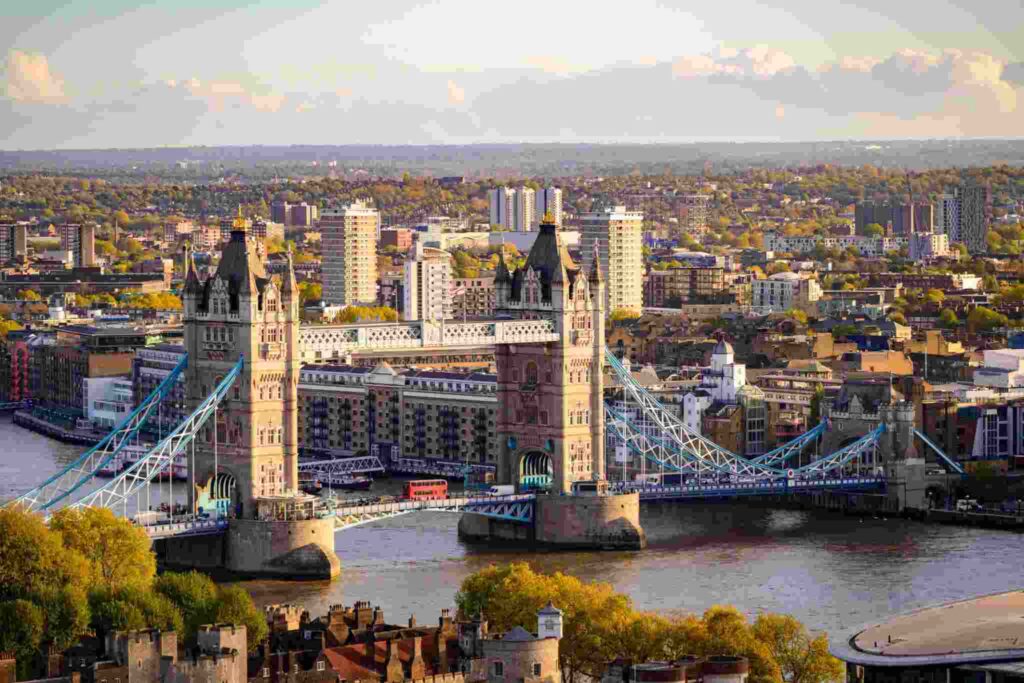
From the majestic Buckingham Palace to the mysterious Tower of London, London is a treasure trove of history. Unleash creativity at the Science Museum and discover prehistoric wonders at the Natural History Museum.
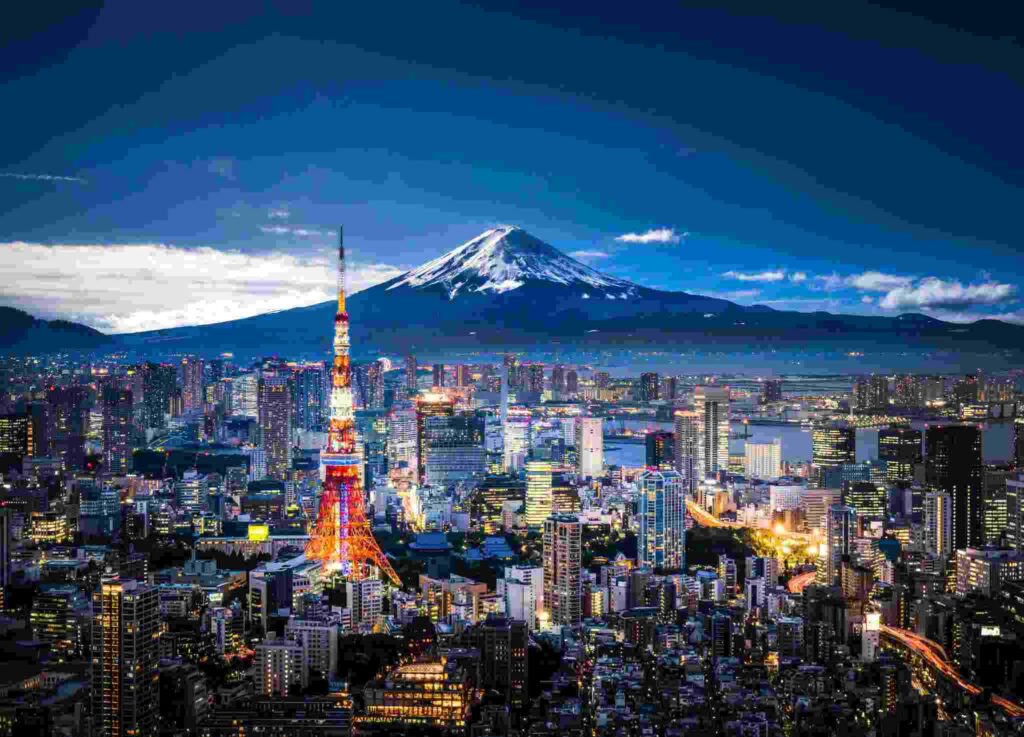
Tokyo’s dazzling blend of modernity and tradition is a treat for families. Experience the future at Disneyland Tokyo and immerse in science at the Miraikan. Dive into Japanese culture and anime phenomena.

Sydney’s iconic Opera House and Harbour Bridge offer stunning views. Get up close with unique wildlife at the Taronga Zoo and explore marine life at the SEA LIFE Sydney Aquarium. Bondi Beach is perfect for family relaxation.
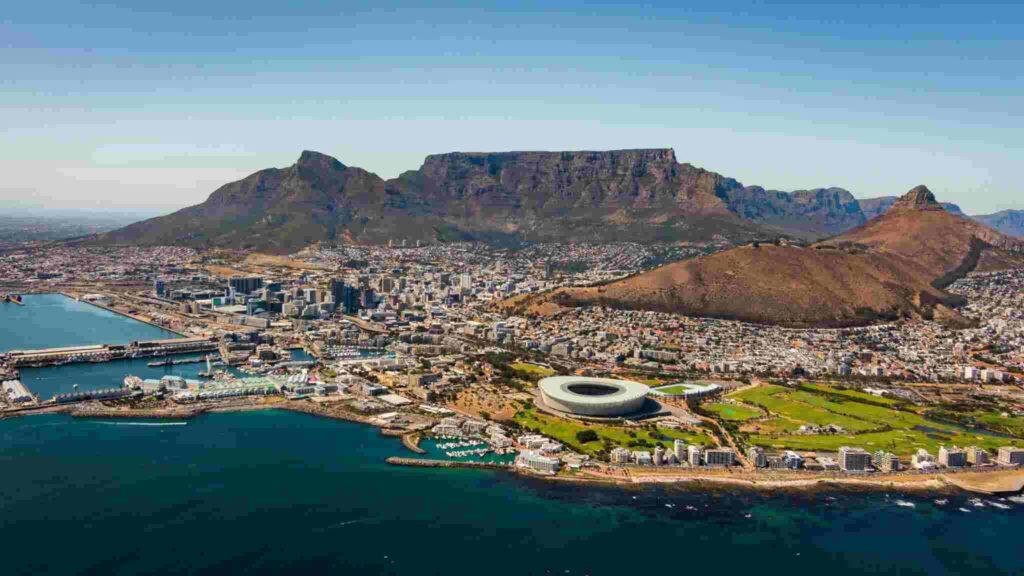
Cape Town boasts breathtaking natural beauty and diverse wildlife. Visit the Cape of Good Hope, ascend Table Mountain, and witness penguins at Boulders Beach. Kids can learn about ecosystems and conservation efforts.
San Francisco’s attractions cater to all ages. Visit Alcatraz Island for history, explore interactive exhibits at the Exploratorium, and indulge in family fun at Fisherman’s Wharf.
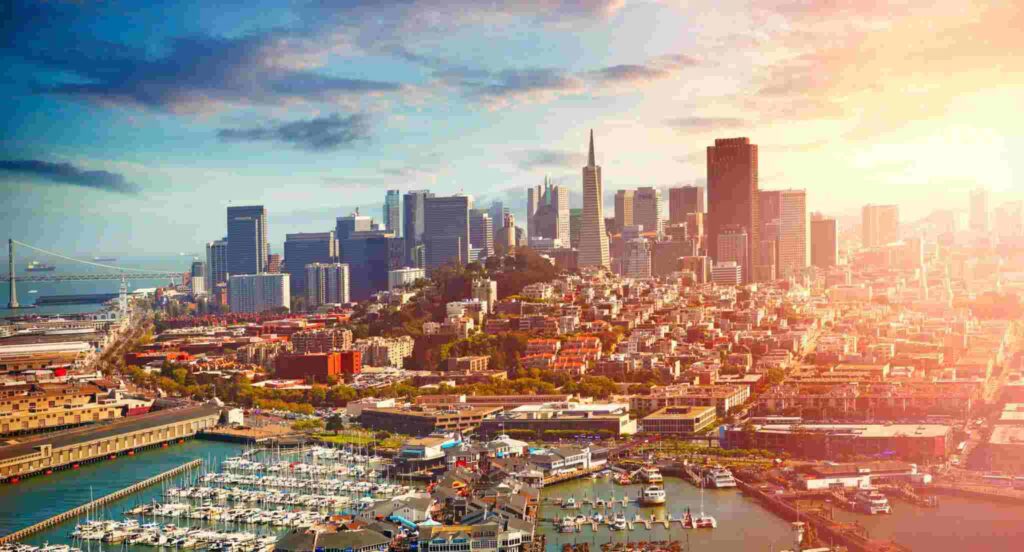
Singapore is a paradise of modern architecture and lush greenery. Witness the futuristic Gardens by the Bay, experience thrills at Universal Studios Singapore, and learn at the Art Science Museum.
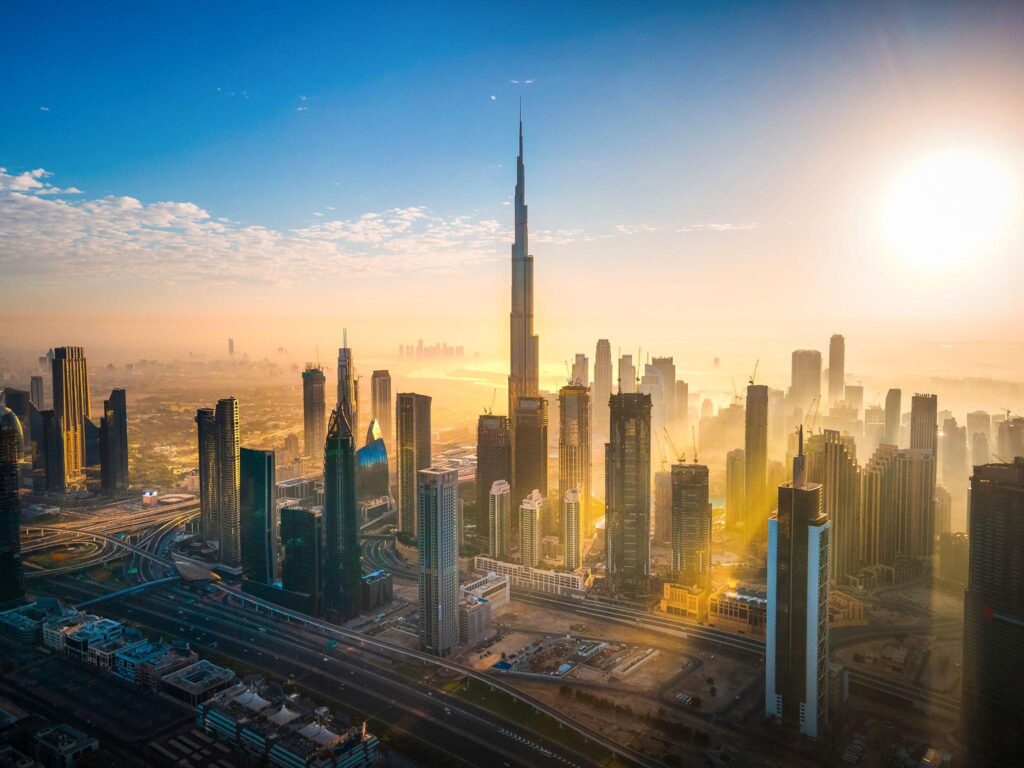
Dubai’s opulence offers unique experiences. Enjoy entertainment at Dubai Mall, ski indoors at Ski Dubai, and embark on a desert safari adventure. Discover a world of contrasts.
Auckland is a hub of natural wonders. From geothermal marvels in Rotorua to Maori culture, the city offers unique experiences. Don’t miss the panoramic views from the Sky Tower.
Quebec City’s charming streets and historic sites provide a peek into Canada’s past. Explore Old Quebec, visit Montmorency Falls, and engage in thought-provoking exhibits at the Musée de la Civilization.
Bangkok’s vibrant street life and cultural sites offer a sensory experience. Visit the majestic Grand Palace, explore Dinosaur Planet, and cruise along the Chao Phraya River.
A journey to Machu Picchu is an archaeological adventure for families. Explore the ancient Incan city, marvel at the architecture, and teach kids about history and preservation.
Seoul’s traditional palaces and modern attractions provide a dynamic family experience. Visit Lotte World Theme Park, explore history at Gyeongbokgung Palace, and engage at the Seoul Children’s Museum.
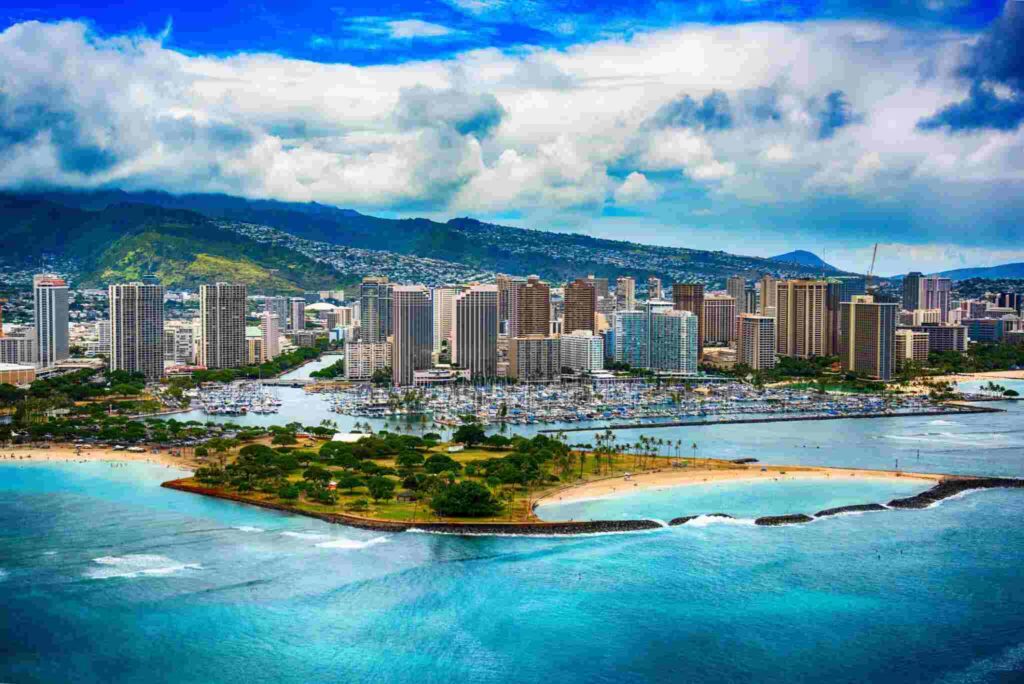
Hawaii’s idyllic beaches and volcanic landscapes create an outdoor classroom. Learn about marine life at Hawaiian aquariums, explore the volcanic wonders, and relax on pristine beaches.
For families seeking magical moments, Orlando is a dream come true. With world-renowned theme parks like Walt Disney World and Universal Studios, children and adults alike can immerse themselves in enchanting worlds of fantasy and adventure. Meet beloved characters, ride exhilarating attractions, and create cherished memories.
Costa Rica offers a paradise of biodiversity and eco-adventures. Explore lush rainforests, zip-line through the treetops, and discover hidden waterfalls. Connect with nature through thrilling activities while appreciating the importance of conservation and sustainable tourism.
For families craving outdoor escapades, Banff National Park is a nature lover’s paradise. Immerse yourself in the stunning landscapes of the Canadian Rockies, from turquoise lakes to towering peaks. Enjoy family-friendly hikes, wildlife spotting, and the chance to witness the Northern Lights in winter.
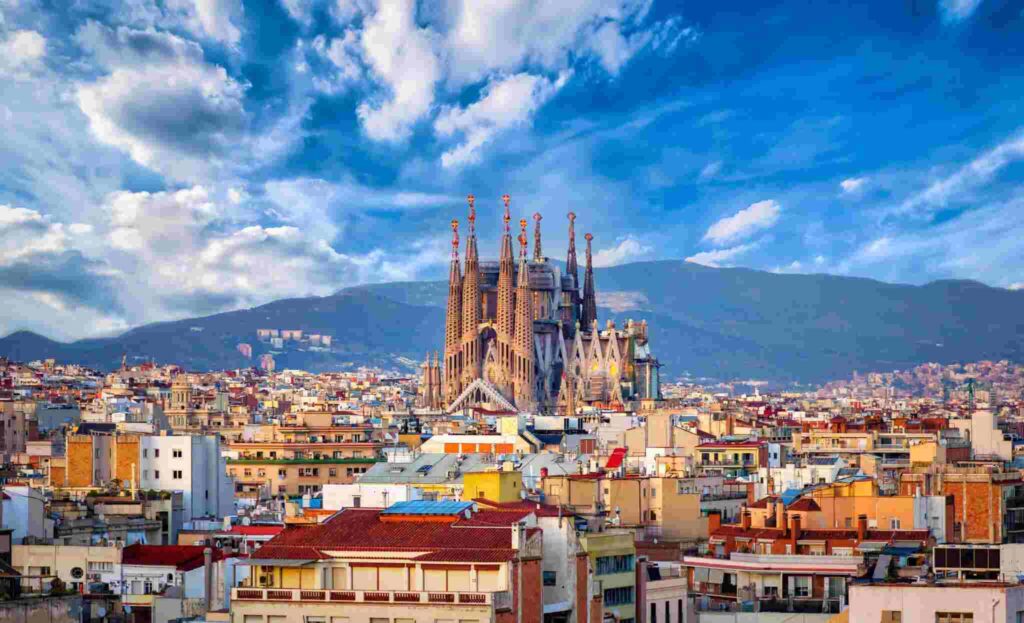
Barcelona’s vibrant culture, stunning architecture, and delectable cuisine make it an ideal destination for families. Explore the whimsical Park Güell, take a stroll down La Rambla, and indulge in mouthwatering tapas. Enjoy the city’s welcoming atmosphere as you soak in Mediterranean charm.
Family vacations are not just about relaxation; they are opportunities for learning, bonding, and creating lifelong memories. These carefully curated destinations offer a perfect blend of entertainment, leisure, and education for families.

Traveling in the digital age has become increasingly convenient, thanks to the advancements in technology. As we venture into 2023, the role of travel apps and gadgets has never been more significant in ensuring seamless and memorable trips. In this article, we will explore the best travel apps and gadgets that every modern traveler should consider packing in their virtual suitcase.
TripIt is a popular travel organizer app that simplifies travel planning. It automatically creates a comprehensive itinerary by extracting details from booking confirmations sent to your email. The app includes flight details, hotel reservations, car rentals, and other activities in one place, making it easy to access all travel plans.
Notable Feature:
Real-time flight updates ensure travelers stay informed about any changes or delays in their flights.
Availability:
TripIt is available for iOS and Android devices.
Website: www.tripit.com
Google Trips is a versatile travel app designed to provide personalized travel recommendations and curated travel guides for various destinations. It syncs with your Gmail account to organize travel reservations and offers offline access to maps and essential travel information, making it an excellent companion for travelers on the go.
Notable Feature
The app offers day plans with suggested activities and itineraries based on your interests and time available. Availability: Google Trips is available for iOS and Android devices.
Website: www.google.com/travel/
Hopper is a flight booking app that uses advanced algorithms to analyze historical flight data and predict the best time to book flights for the lowest fares. It also sends fare alerts, notifying users when prices drop for their preferred routes, helping them secure the best deals.
Notable Feature
The app provides a color-coded calendar that shows the cheapest days to fly for a specific route.
Availability:
Hopper is available for iOS and Android devices.
Website: https://hopper.com/
Airbnb is a leading platform for finding unique and affordable accommodations around the world. Travelers can choose from various lodging options, including private rooms, entire homes, and even castles or treehouses. The platform connects travelers with local hosts, making for a more authentic and personalized travel experience.
Notable Feature
Airbnb offers “Experiences,” allowing travelers to book unique activities and tours led by locals.
Availability:
Airbnb is available for iOS and Android devices.
Website: https://www.airbnb.com/
It allows travelers to convert currencies at current market rates, making it easier to manage finances while abroad.
Notable Feature:
The app can be used offline, which is convenient for travelers without internet access.
Availability:
XE Currency is available for iOS and Android devices.
Website: https://www.xe.com/currencyconverter/
Duolingo is a popular language learning app that offers interactive lessons to help users learn new languages. It uses gamification techniques, making language learning fun and engaging for travelers who want to grasp essential phrases and vocabulary.
Notable Feature:
The app offers a wide range of languages to learn, including Spanish, French, German, Japanese, and more.
Availability:
Duolingo is available for iOS and Android devices
Website: https://www.duolingo.com/
Google Translate is a powerful language translation app that supports over 100 languages. It offers various features, including text translation, speech-to-text, and camera translation, allowing travelers to communicate effectively in foreign countries.
Notable Feature:
The app can translate printed text from images taken with the smartphone’s camera, making it useful for deciphering foreign signs and menus.
Availability: Google Translate is available for iOS and Android devices.
Website: https://translate.google.com/
Uber is a widely used ride-hailing app that connects travelers with drivers in numerous cities worldwide. Travelers can easily book rides and pay securely through the app, eliminating the need for cash transactions.
Notable Feature:
The app offers different ride options, such as UberX, Uber Black, and UberPOOL, to cater to various preferences and budgets.
Availability: Uber is available for iOS and Android devices.
Website: https://m.uber.com/
Citymapper is a comprehensive navigation app designed for urban travelers. It provides real-time updates on public transportation options, bike-sharing availability, and even walking directions, making it a go-to app for exploring cities efficiently.
Notable Feature:
The app offers detailed information on public transportation schedules, including train and bus times and live departure updates.
Availability: Citymapper is available for iOS and Android devices.
Website: https://citymapper.com/
Skiplagged is a unique flight booking app that specializes in finding hidden city flight deals. It allows travelers to book cheaper flights with layovers in their actual destination city, saving money on certain routes.
Notable Feature: Skiplagged also offers regular flight search options, making it versatile for both traditional and hidden city flight booking.
Availability: Skiplagged is available for iOS and Android devices.
Website: https://skiplagged.com/
PackPoint is a helpful packing app that generates personalized packing lists based on the destination, travel dates, and planned activities. It considers weather forecasts and ensures travelers don’t forget essential items for their trips.
Notable Feature: The app allows users to customize their packing lists and save templates for future trips.
Availability: PackPoint is available for iOS and Android devices.
Website: https://packpnt.com/
Trail Wallet is a budget tracking app specifically designed for travelers. It helps users set daily budgets, log expenses, and monitor spending during their journeys, providing a comprehensive view of their travel expenses.
Notable Feature: The app supports multiple currencies, making it suitable for international travelers.
Availability: Trail Wallet is available for iOS devices.
Website: https://voyagetravelapps.com/trail-wallet/
Google Lens is a powerful visual search app that allows travelers to identify landmarks, objects, and even translate foreign text through the smartphone camera. It uses image recognition and machine learning technologies to provide relevant information about the captured objects.
Notable Feature: The app can recognize plants, animals, famous artworks, and landmarks, making it a handy tool for travel exploration.
Availability: Google Lens is available for iOS and Android devices.
Website: https://lens.google/
Hostelworld is a booking platform that specializes in budget accommodations, such as hostels and guesthouses. It offers user reviews and ratings to help travelers find the best and most affordable places to stay.
Notable Feature: The app provides a “Hostel Compare” feature, allowing users to compare prices, facilities, and ratings of different hostels.
Availability: Hostelworld is available for iOS and Android devices.
Website: https://www.hostelworld.com/
These travel apps cover a wide range of needs and preferences, making them valuable tools for any modern traveler seeking a seamless and enriching travel experience.
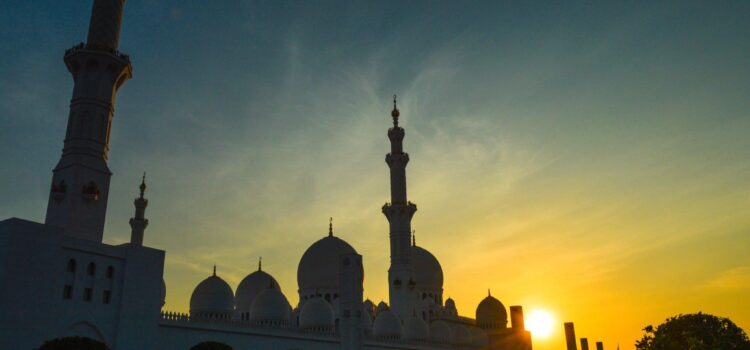
Mosques are not only places of worship but also architectural marvels that showcase the diversity of cultures and civilizations around the world. From the towering minarets to the intricate designs, each mosque has a unique story to tell. Join us on a journey from East to West as we explore some of the most magnificent and biggest mosques the world has to offer.
The Masjid al-Haram, located in Mecca, Saudi Arabia, is the holiest mosque in Islam and a place of immense reverence for millions of Muslims worldwide. It is the destination of the annual Hajj pilgrimage, a fundamental pillar of Islamic faith. The mosque’s striking feature is the Kaaba, the sacred structure at its center, draped in black cloth, and encasing the revered Black Stone.
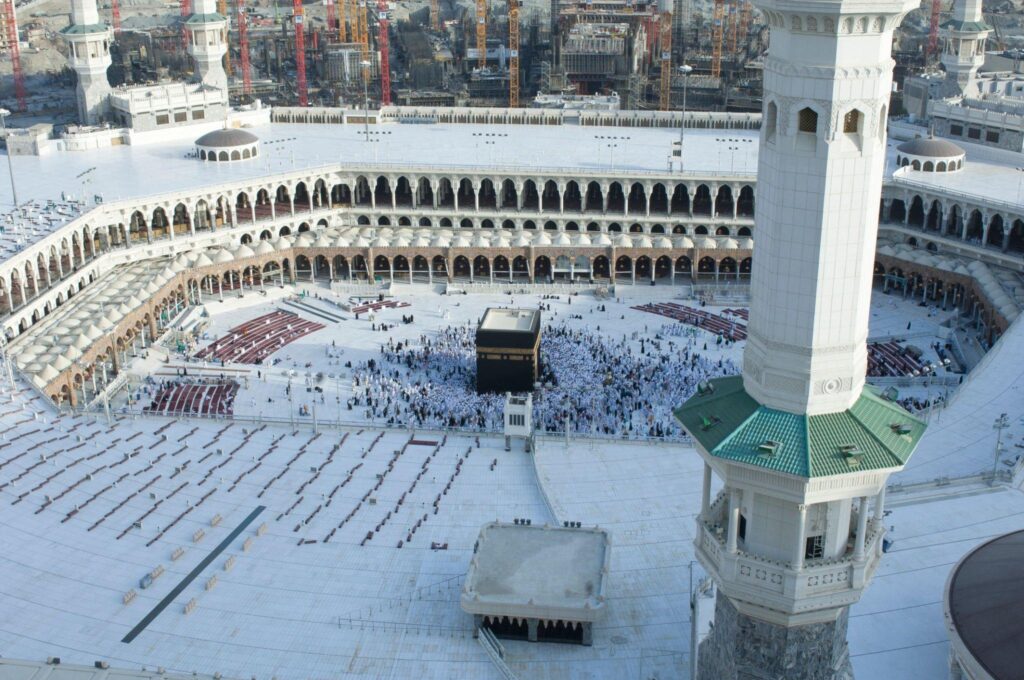
FACTS
The original structure dates back to the time of Prophet Ibrahim (Abraham), but it has undergone several expansions throughout history. The Black Stone (Al-Hajar al-Aswad) embedded in the eastern corner of the Kaaba is believed to be a sacred stone sent from heaven.
Situated in the city of Medina, Al-Masjid an-Nabawi is the second holiest mosque in Islam and the burial place of the Prophet Muhammad. It stands as a historical and spiritual center, drawing pilgrims from across the globe. The iconic Green Dome shelters the Prophet’s tomb and symbolizes peace and serenity.
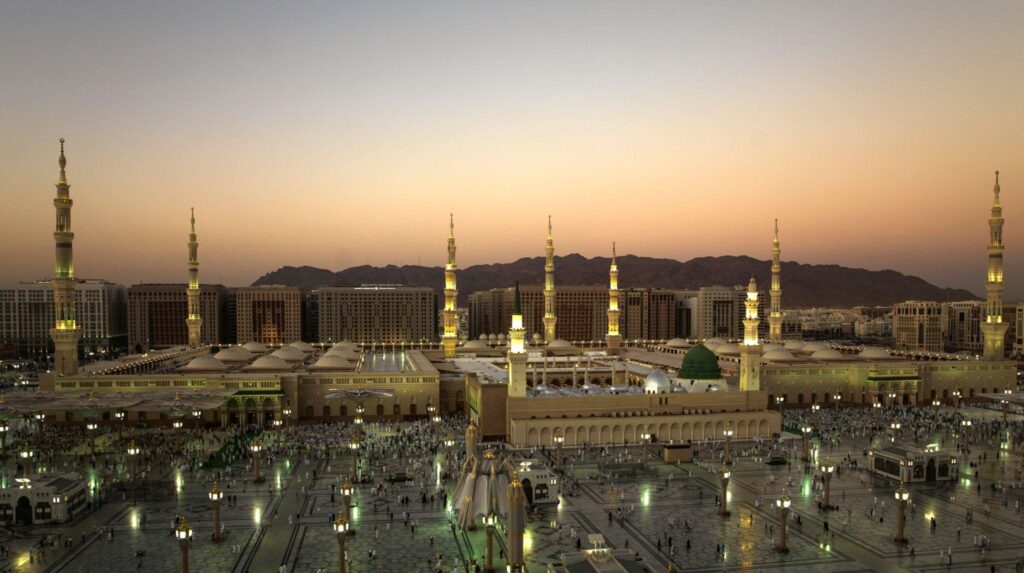
FACTS
The mosque was originally built by Prophet Muhammad in the 7th century, and it has been expanded and renovated over the centuries. The Green Dome, covering the tomb of Prophet Muhammad, was constructed by the Ottomans in the 16th century.
In the heart of Abu Dhabi, the Sheikh Zayed Grand Mosque stands as a grand symbol of modern Islamic architecture. This awe-inspiring mosque features a majestic fusion of Islamic influences from various cultures. The white marble and gold accents add to its grandeur, leaving visitors in awe of its beauty.
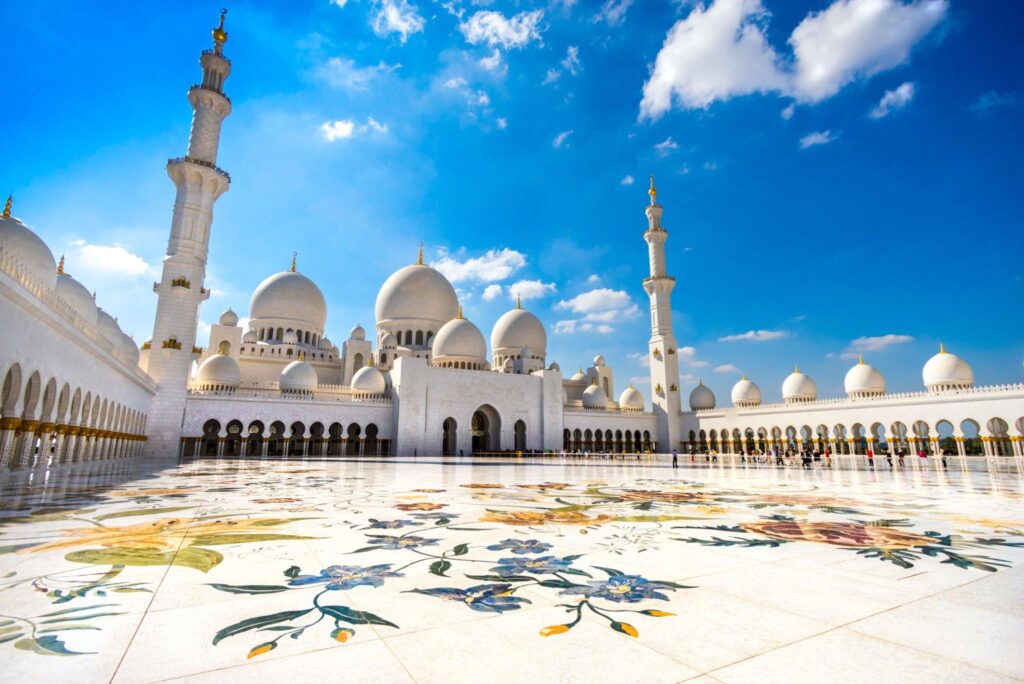
FACTS
The mosque is named after Sheikh Zayed bin Sultan Al Nahyan, the founding father and first president of the United Arab Emirates.
Overlooking the Atlantic Ocean in Casablanca, Morocco, the Hassan II Mosque is an extraordinary architectural masterpiece. Its magnificent minaret soars into the sky, guiding worshippers and welcoming visitors. The mosque’s location by the sea offers a breathtaking backdrop, making it a sight to behold.
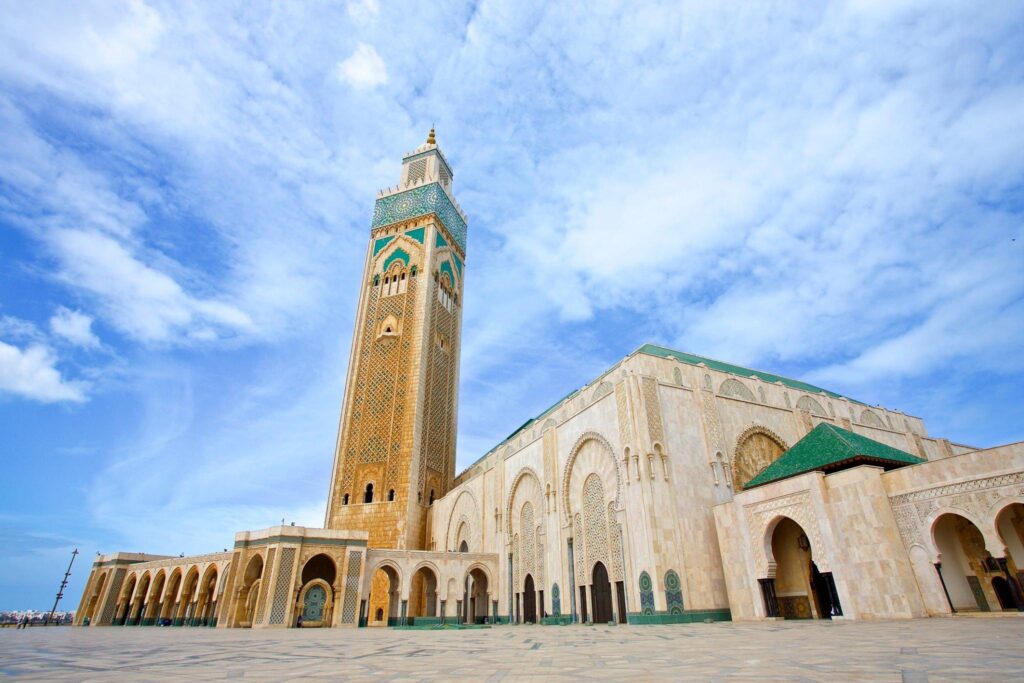
FACTS
Construction began in 1986 and was completed in 1993. The mosque’s minaret is the tallest in the world, soaring to a height of 210 meters.
Istanbul’s iconic Blue Mosque, also known as Sultan Ahmed Mosque, is a stunning blend of Ottoman and Byzantine architectural styles. Adorned with beautiful Iznik tiles, its interior features an enchanting play of blue and white hues. This historic mosque is a major tourist attraction, drawing admirers from around the world.
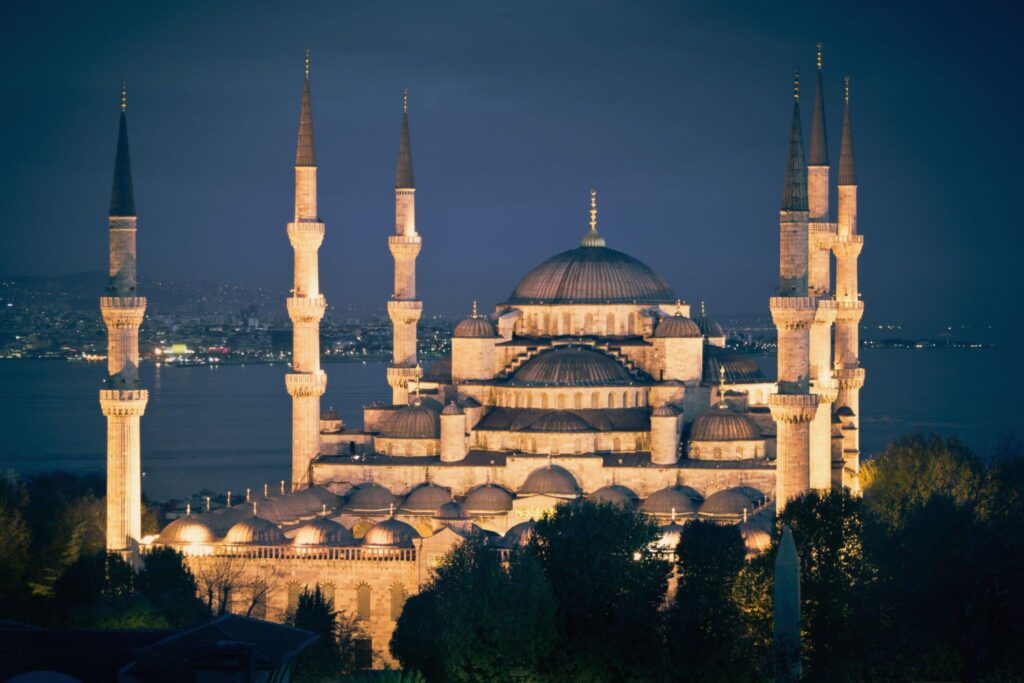
FACTS
The mosque was completed in 1616 during the reign of Sultan Ahmed I. The mosque is famous for its six minarets, a rarity during its time of construction.
A symbol of the Mughal era’s architectural brilliance, the Badshahi Mosque in Lahore, Pakistan, is an embodiment of grandeur and magnificence. With its vast courtyard capable of holding thousands of worshippers, it proudly holds the title of the world’s largest mosque courtyard.
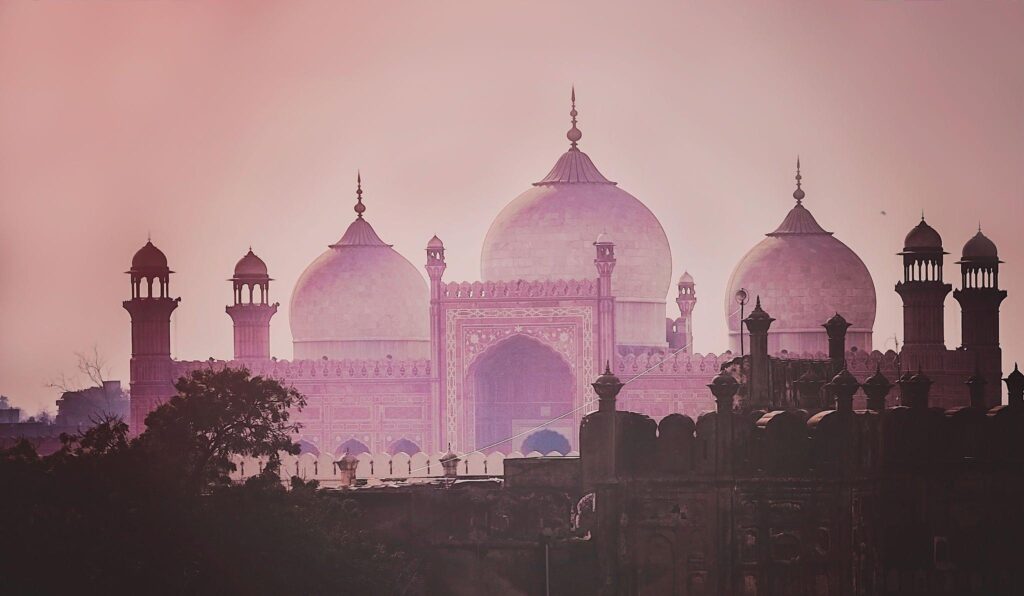
FACTS
The mosque was completed in 1673 during the reign of Mughal Emperor Aurangzeb. It held the title of the world’s largest mosque for over 300 years until the expansion of Masjid al-Haram.
Built during the Mughal reign in Delhi, India, the Jama Masjid is an architectural marvel made of red sandstone and white marble. Its large central courtyard and impressive domes make it one of the most awe-inspiring religious sites in the country.
FACTS
The construction began in 1650 and was completed in 1656 during the reign of Shah Jahan. The mosque’s main courtyard can hold up to 25,000 worshippers at a time.
Located in the heart of Lahore, the Wazir Khan Mosque showcases the finesse of Mughal architecture. It is famous for its exquisite frescoes, intricate tile work, and beautiful mosaic patterns, making it a true gem among the mosques of Pakistan.
FACTS
The mosque was completed in 1642 during the reign of Mughal Emperor Shah Jahan. The mosque is renowned for its elaborate frescoes and intricate tile work.
Brunei’s Sultan Omar Ali Saifuddien Mosque is an extravagant display of Islamic artistry and craftsmanship. With its gleaming white exterior and a majestic golden dome seemingly floating above an artificial lagoon, the mosque is a breathtaking sight to behold.
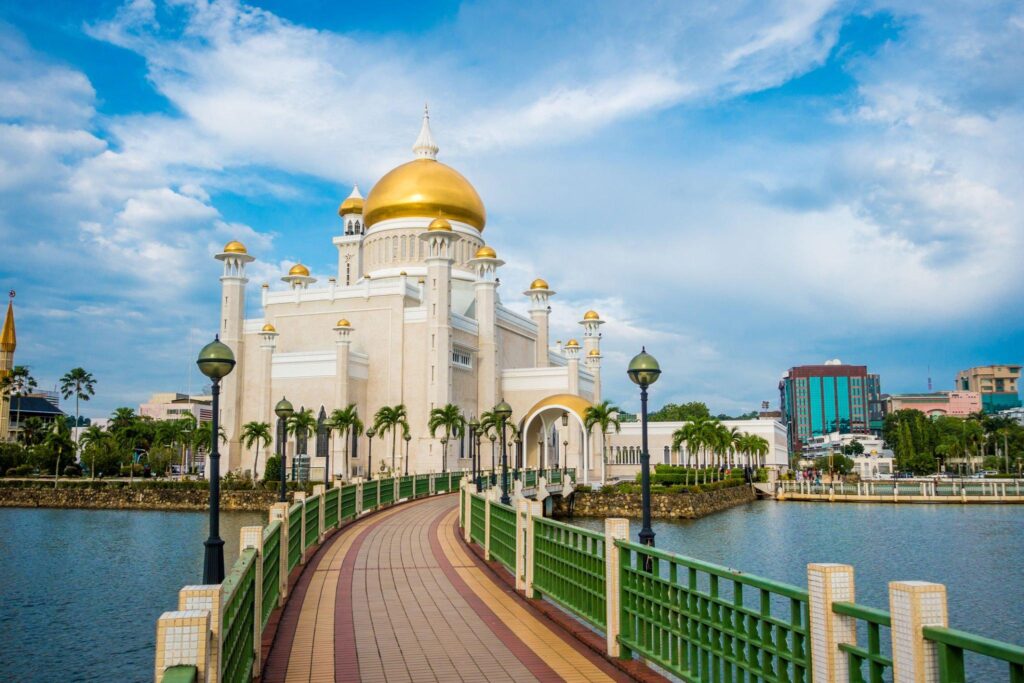
FACTS
The mosque was completed in 1958 to honor the 28th Sultan of Brunei, Omar Ali Saifuddien III. The mosque stands on an artificial lagoon, creating a stunning reflection of its golden dome.
The Faisal Mosque in Islamabad, Pakistan, is a strikingly modern mosque with a unique design inspired by a traditional Bedouin tent. Set against the backdrop of the picturesque Margalla Hills, the mosque’s vast prayer hall can accommodate up to 100,000 worshippers.
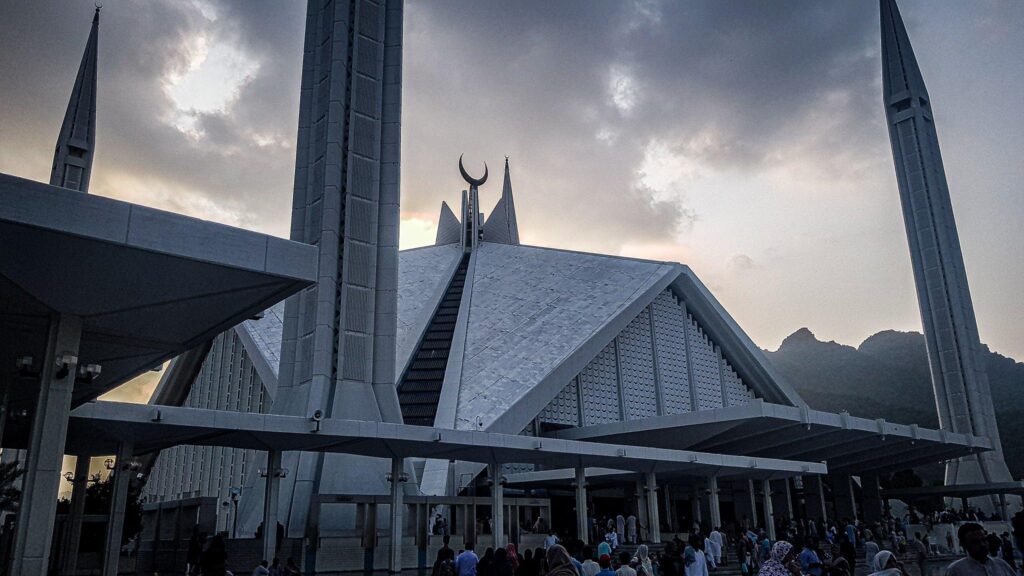
FACTS
The mosque was completed in 1986 and was a gift from King Faisal of Saudi Arabia to Pakistan. The unique design was inspired by a Bedouin tent and was selected through an international competition.
Located in the Kazan Kremlin, the Qolşärif Mosque is a reconstruction of an ancient mosque that once graced the same site. Its stunning architecture, combined with the captivating night illumination, creates a mesmerizing scene in the city of Kazan, Russia.
FACTS
The original mosque was built in the 16th century, but it was destroyed by fire in 1552. The current reconstruction was completed in 2005. The mosque is located within the Kazan Kremlin, a UNESCO World Heritage site.
The Id Kah Mosque, located in Kashgar, China, is an architectural gem that reflects the region’s rich history and cultural diversity. Its unique blend of Uyghur, Islamic, and Chinese architecture makes it an emblem of the ancient Silk Road’s influence on the area.
FACTS
The mosque’s original construction dates back to 1442, but it has undergone renovations and expansions over the years. With a capacity of over 20,000 worshippers, it is one of the largest mosques in China.
Away from the Islamic world’s heartlands, the Grand Mosque of Paris stands as a beautiful representation of Islamic architecture and a symbol of peace. Its Andalusian gardens, tranquil courtyards, and stunning mosaics offer a haven of beauty and serenity in the heart of the French capital.
FACTS
The mosque was built between 1922 and 1926 as a tribute to the Muslim soldiers who fought in World War I. The mosque’s beautiful Andalusian gardens offer a serene escape in the heart of Paris.
The Crystal Mosque in Malaysia is a modern architectural marvel made entirely of glass and steel. Its shimmering translucency captivates visitors, especially during the evening when the mosque is illuminated, creating a magical spectacle.
FACTS
The mosque was completed in 2008. It is made of steel, glass, and crystal, giving it a unique and dazzling appearance.
The Bait ur Rahman Grand Mosque in Banda Aceh, Indonesia, is more than just an architectural wonder; it represents resilience and hope. Having survived earthquakes and a tsunami, it stands tall as a symbol of strength and faith for the people of Aceh.
FACTS
The original mosque was built in 1875, but it has been reconstructed several times due to natural disasters. The mosque’s five black domes represent the Five Pillars of Islam.
CONCLUSION
Embarking on a journey from East to West, we have explored some of the world’s biggest and most magnificent mosques. These sacred places not only showcase extraordinary architectural feats but also carry profound spiritual significance for millions of people. From the iconic Masjid al-Haram in Mecca to the modern marvel of Sheikh Zayed Grand Mosque, each mosque holds a unique story that adds to the rich tapestry of human civilization.
FAQs
Please note that some founding dates are approximate as historical records may vary
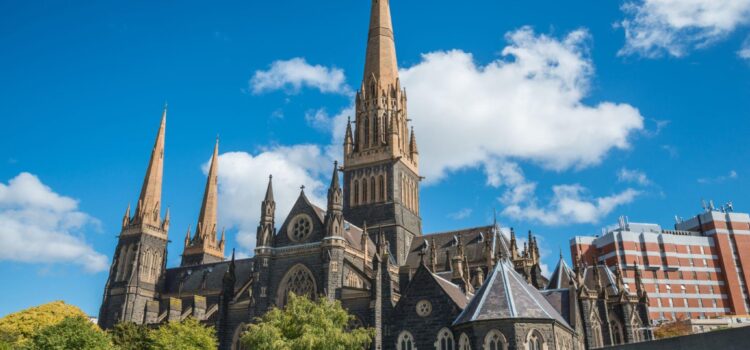
Churches have held a significant place in human history, serving as places of worship, cultural landmarks, and architectural marvels. Among them, some stand out for their sheer size and breathtaking grandeur. In this article, we embark on a global tour to explore the largest churches in the world, each with its own unique stories and charm.
Our journey begins in the heart of Vatican City, where the awe-inspiring St. Peter’s Basilica reigns supreme. As the epicenter of the Roman Catholic Church, it holds tremendous spiritual and historical significance. The grandeur of its architecture and the abundance of artistic masterpieces within its walls leave visitors spellbound.
The Basilica’s dome, designed by Michelangelo, stands as a testament to human ingenuity and faith. The awe-inspiring Pietà sculpture by the same artist and Bernini’s magnificent bronze canopy over the high altar are just a few of the numerous treasures housed within its walls. For Catholics, a visit to St. Peter’s Basilica is a pilgrimage of a lifetime, offering a profound spiritual experience.
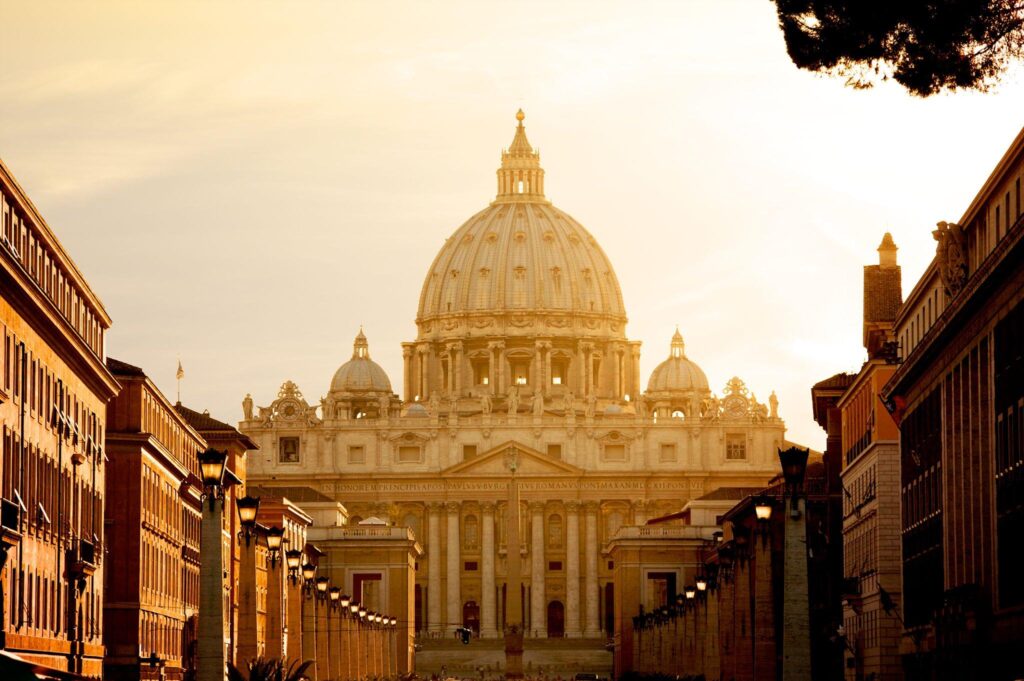
FACTS
The original basilica was built in the 4th century AD, but the current structure was completed in 1626. The original basilica was ordered to be built by Emperor Constantine the Great, and the current basilica was commissioned by Pope Julius II. St. Peter’s Basilica is considered one of the holiest Catholic sites and is built on the site where St. Peter, one of Jesus’ apostles, is believed to be buried.
From the heart of the Vatican, we journey to Brazil, where the Basilica of the National Shrine of Our Lady of Aparecida stands as a symbol of devotion and faith. Dedicated to the patron saint of Brazil, Our Lady of Aparecida, this colossal church attracts millions of pilgrims each year.
The Basilica houses a small statue of Our Lady of Aparecida, which is believed to have miraculous powers. Pilgrims from all walks of life come to seek her blessings and offer their prayers. The vastness of the Basilica’s interior, along with its stunning neo-Romanesque architecture, creates a sense of awe and reverence.
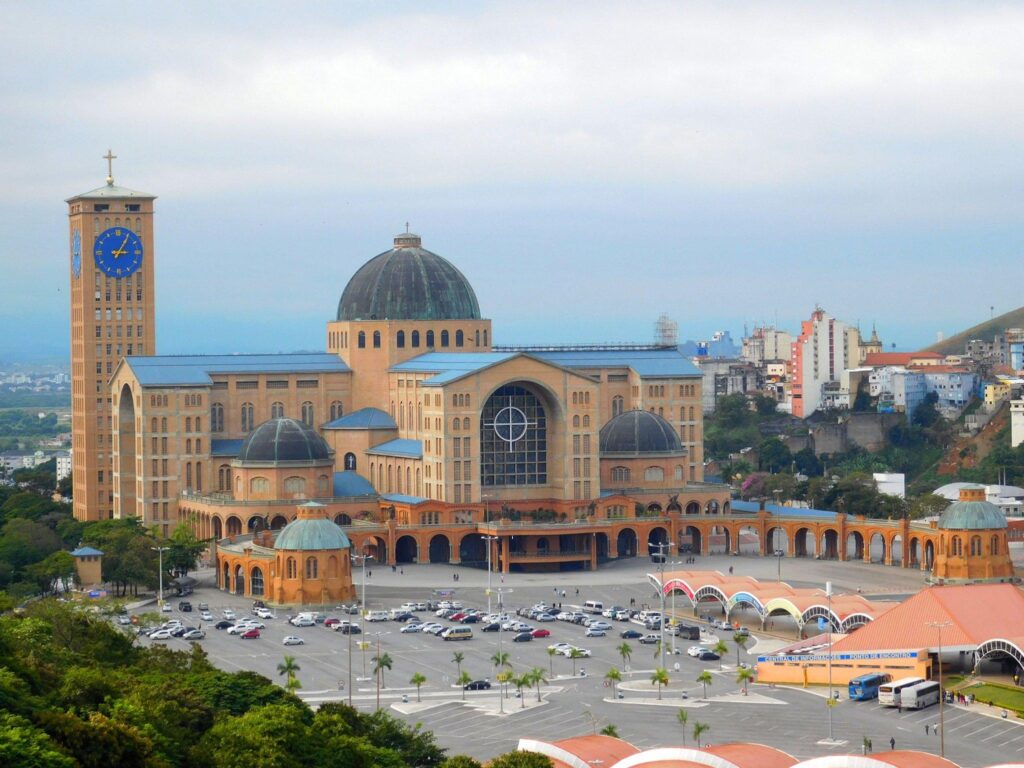
FACTS
The foundation stone was laid in 1955, and the basilica was inaugurated in 1980. The construction of the basilica was initiated by the Redemptorist Order and received support from the Brazilian government. The Basilica of Our Lady of Aparecida is dedicated to Our Lady of Aparecida, the patron saint of Brazil, and is one of the largest Marian shrines in the world.
From Brazil, we cross continents to Spain, where the awe-inspiring Sagrada Familia in Barcelona stands as an architectural marvel still in progress. Designed by the renowned architect Antoni Gaudi, this basilica is a stunning blend of Gothic and Art Nouveau styles.
The Sagrada Familia’s construction began in 1882 and continues to this day, with an expected completion date in the coming decades. Its unique facade, adorned with intricate sculptures and faceted towers, captures the imagination of all who lay eyes on it. The interior is equally mesmerizing, with its forest-like columns and colorful stained glass windows that create a breathtaking play of light and color.
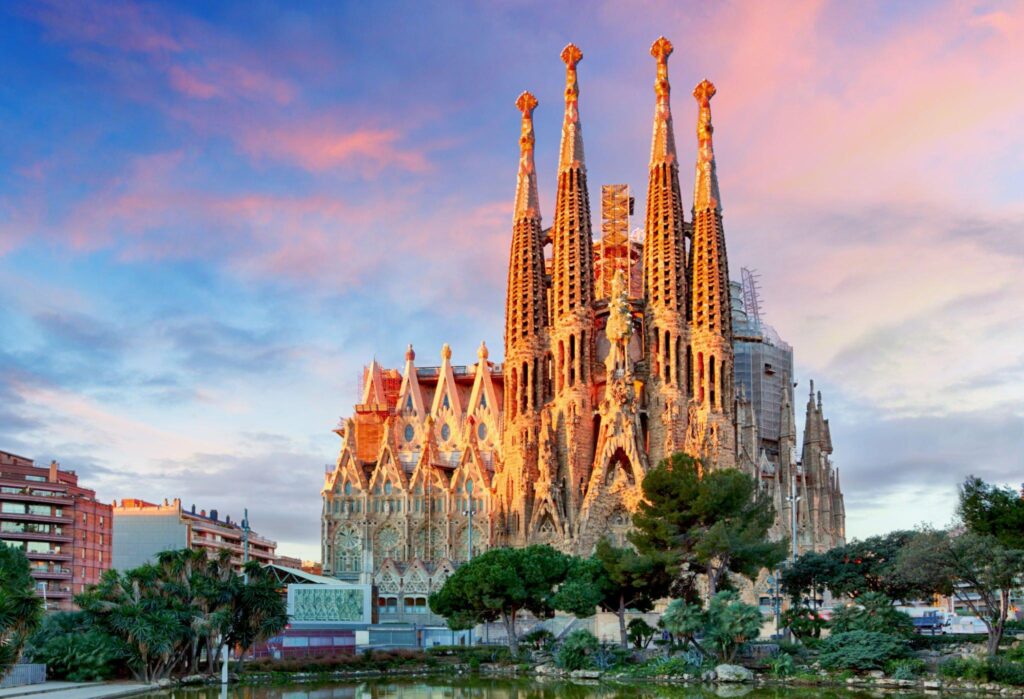
FACTS
Construction began in 1882, and the basilica is still under construction, with an expected completion date in the 2030s. The idea for the basilica was conceived by bookseller Josep Maria Bocabella, and architect Antoni Gaudi took over the project a year after its inception. The Sagrada Familia is Gaudi’s most famous work, and it is characterized by its unique and innovative architectural design that combines Gothic and Art Nouveau elements.
Our journey continues to Italy, where the Milan Cathedral, known as Duomo di Milano, stands as an iconic symbol of the city’s rich history and religious devotion. This majestic Gothic cathedral took nearly six centuries to complete and is a true testament to the dedication of generations of builders and artists.
The cathedral’s elaborate facade, adorned with over 3,000 statues, is a sight to behold. Its roof terraces offer panoramic views of Milan, rewarding visitors with a breathtaking cityscape. Inside, the cathedral’s vast interior is adorned with beautiful stained glass windows and intricate marble carvings, leaving visitors in awe of its grandeur.
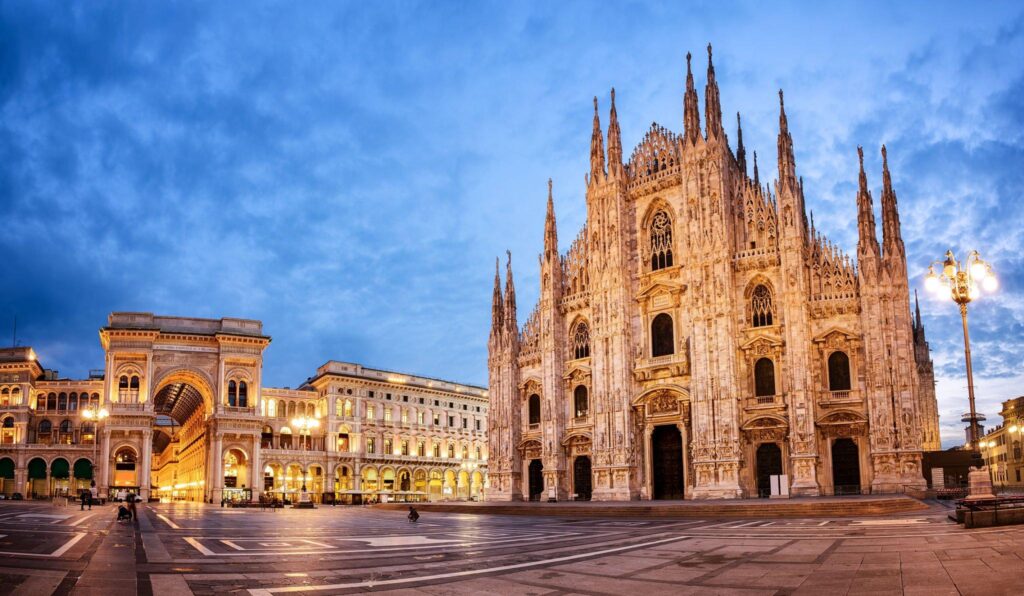
FACTS
Construction began in 1386, and the cathedral was completed in 1965. The cathedral was commissioned by Archbishop Antonio da Saluzzo and later continued by Gian Galeazzo Visconti. The Milan Cathedral is the largest church in Italy and took nearly six centuries to complete.
From Europe, we cross the Atlantic to New York City, where the neo-gothic masterpiece, St. Patrick’s Cathedral, graces the bustling streets of Manhattan. This architectural gem has served as a spiritual haven for Catholics and a symbol of the city’s rich religious heritage.
The exterior of St. Patrick’s Cathedral features awe-inspiring spires and intricate stone carvings. As visitors step inside, they are greeted by a tranquil ambiance, with soft light filtering through the stained glass windows. The cathedral’s stunning altars, chapels, and religious artwork captivate all who enter, making it a must-visit destination in the heart of New York.
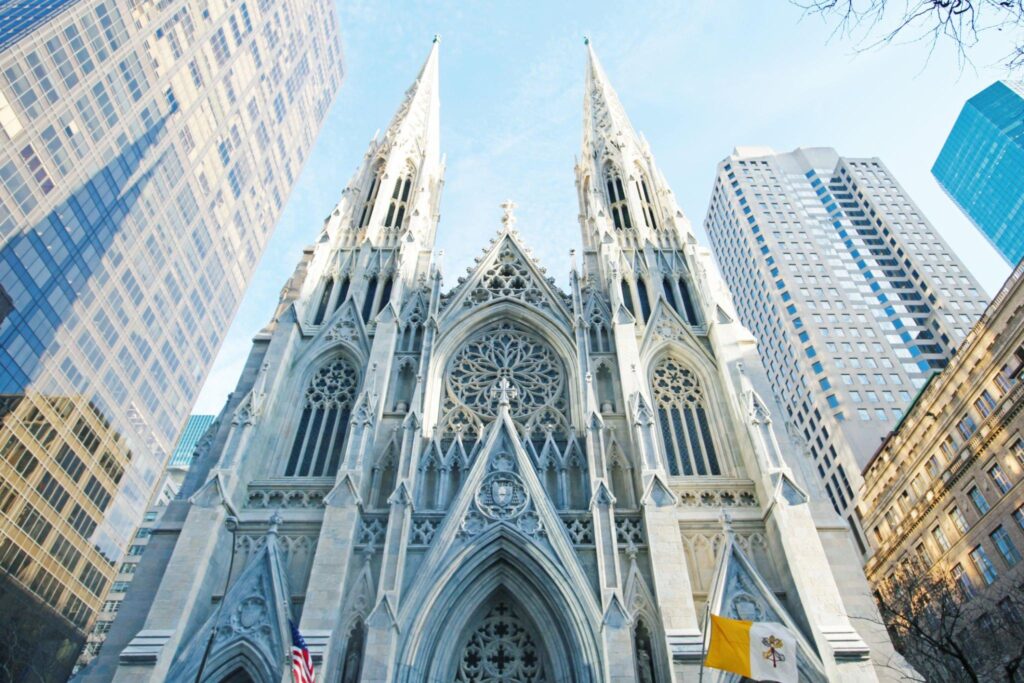
FACTS
Construction began in 1858, and the cathedral was completed in 1878. The idea for the cathedral was conceived by Archbishop John Hughes, and the cornerstone was laid by Archbishop Hughes in 1858. St. Patrick’s Cathedral is a neo-gothic architectural gem in the heart of Manhattan and serves as the seat of the archbishop of New York.
We return to Spain, this time to Seville, where the largest Gothic cathedral in the world awaits our exploration. The Seville Cathedral, a UNESCO World Heritage site, is an architectural marvel that took over a century to build.
The Giralda tower, once a minaret of a mosque, now serves as a bell tower and offers breathtaking views of the city. Inside, the cathedral’s sheer size and grandeur are awe-inspiring, with intricate details on every corner. The stunning altars, including the breathtaking retablo, and the tomb of Christopher Columbus add to the cathedral’s allure.
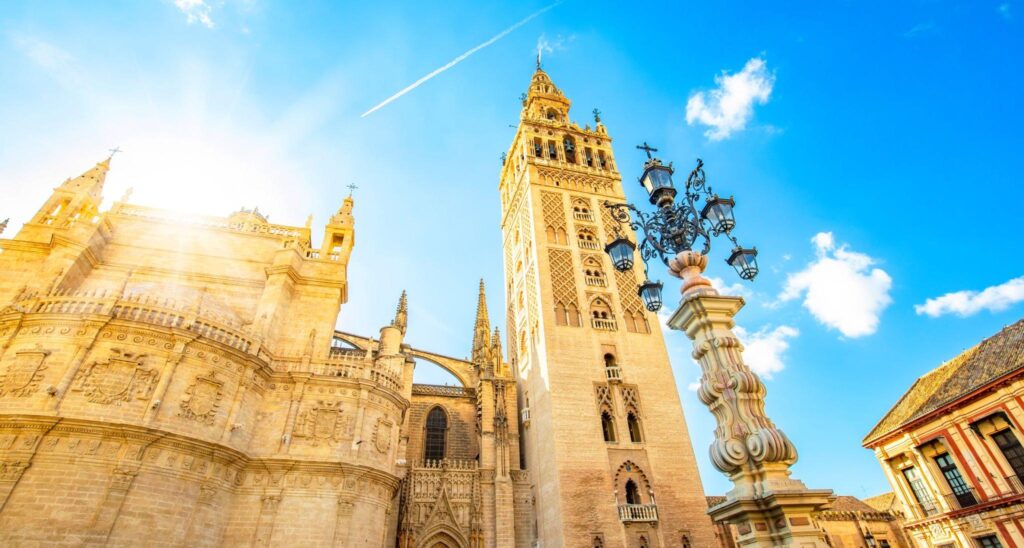
FACTS
Construction began in 1402, and the cathedral was completed in 1506. The cathedral was commissioned by King Ferdinand III of Castile and built on the site of a former mosque.
Our final destination takes us to the heart of London, where Westminster Abbey stands as a symbol of British history, monarchy, and cultural heritage. This historic church has witnessed countless royal coronations, weddings, and burials, making it a significant landmark in British history.
The Gothic architecture of Westminster Abbey is a sight to behold, with its soaring arches and stunning stained glass windows. The Poets’ Corner, where renowned writers and poets are laid to rest, adds a sense of literary richness to the church. A visit to Westminster Abbey is a journey through time, immersing visitors in the pages of British history.
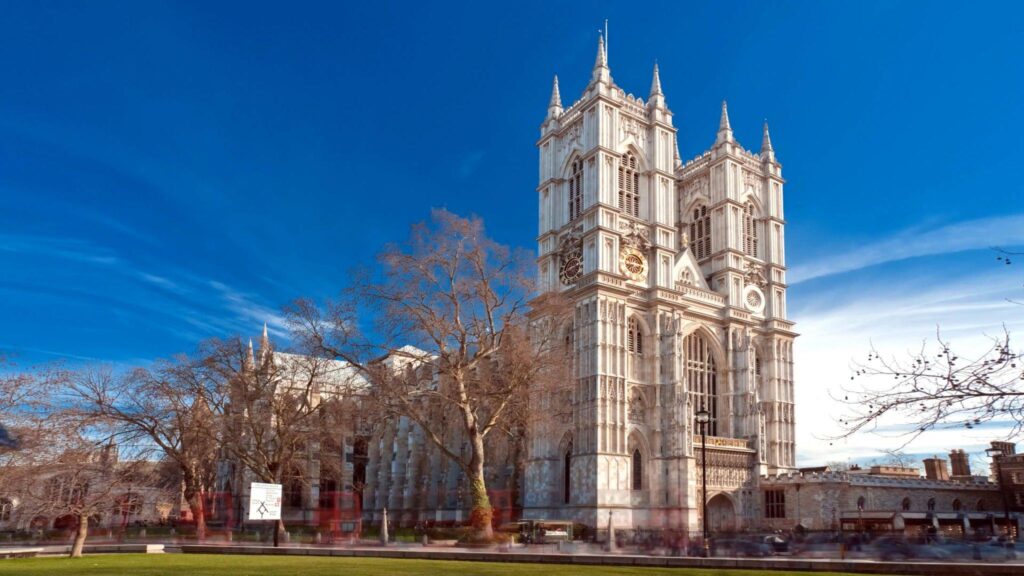
FACTS
Construction began in 1245, and the abbey was consecrated in 1065. The abbey was founded by Edward the Confessor, the King of England. Westminster Abbey is a significant religious and cultural landmark in British history and has been the site of numerous royal coronations, weddings, and burials.
CONCLUSION
As we conclude our global tour of the largest churches, we are left in awe of the grandeur and spiritual significance these architectural wonders hold. From the iconic St. Peter’s Basilica in Vatican City to the historic Westminster Abbey in London, each church leaves an indelible mark on the hearts of visitors.
These majestic structures not only serve as places of worship but also as cultural landmarks that unite people from different corners of the world. Their sheer size, architectural brilliance, and religious importance make them a must-visit for travelers and pilgrims alike.
FAQs
Please note that historical records may vary, and some founding years are approximate due to the long construction periods and renovations of these historical churches.

Asia’s subcontinent has a history as vast and diverse as the land itself. From ancient civilizations to modern marvels, the subcontinent has been a cradle of culture and a melting pot of civilizations for thousands of years. In this article, we embark on a journey through time and culture, unearthing the untold stories that have shaped the region’s identity.
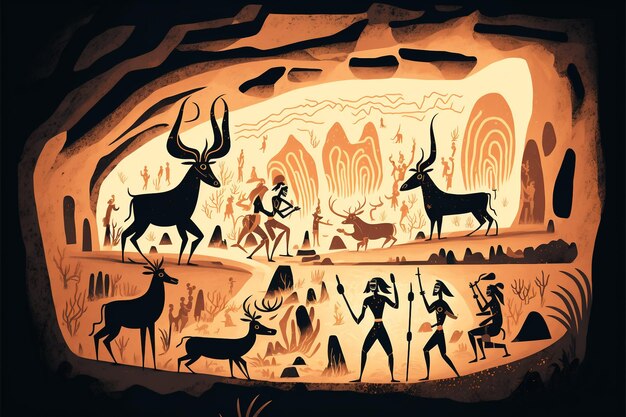
The subcontinent was also home to the great Mauryan and Gupta empires, known for their contributions to science, art, and literature. The teachings of Emperor Ashoka, carved into stone pillars, spread messages of peace and compassion that resonate even today.
As time marched on, this region witnessed several golden ages, where art, science, and philosophy flourished. The Gupta Dynasty’s reign is often referred to as the Golden Age of India, marked by great strides in mathematics, astronomy, and medicine.
Similarly, the Mughal Empire’s zenith saw remarkable architectural wonders like the Taj Mahal, a symbol of eternal love, and the Red Fort, a majestic fortress that stands proudly to this day.
Forgotten Legends and Myths
The subcontinent’s folklore is filled with captivating tales of gods, demons, and mythical creatures. Stories of valor and wisdom, like the Ramayana and the Mahabharata, have been passed down through generations, shaping cultural values and beliefs.
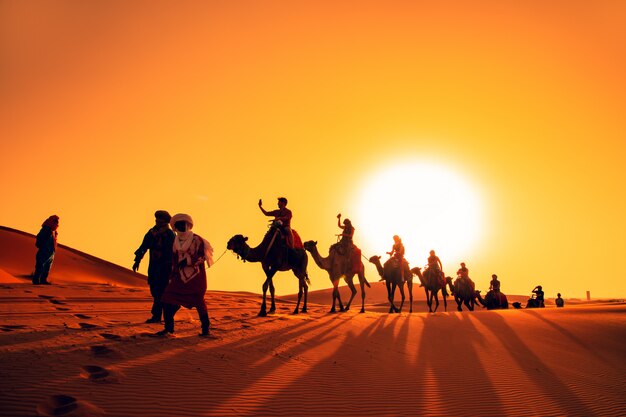
The Silk Road: A Bridge of Cultures
The ancient Silk Road played a pivotal role in connecting Asia’s subcontinent with the rest of the world. Caravans traversed vast distances, carrying goods, ideas, and cultures from East to West and vice versa. This exchange enriched the subcontinent’s heritage and fostered an atmosphere of multiculturalism.
Impact of Colonial Rule
The pages of history also bear witness to the colonial era, when foreign powers established dominion over the subcontinent. The British Raj, in particular, left an indelible mark on the region, bringing both progress and adversity. The struggle for independence was marked by iconic figures like Mahatma Gandhi, whose nonviolent resistance became a beacon of hope for oppressed peoples worldwide.

Independence Movements
Various regions within the subcontinent fought for their right to self-governance. The Indian Independence Movement, the Bangladesh Liberation War, and the struggles of Sri Lanka and Nepal are among the significant chapters in the region’s quest for freedom.
Cultural Diversity and Traditions
The subcontinent’s cultural landscape is as diverse as its geographical terrain. With hundreds of languages, traditions, and rituals, the region exemplifies the beauty of unity in diversity. The colorful festivals and celebrations are a reflection of this rich tapestry.
Modern Asia’s Subcontinent
As the world progresses, so does the subcontinent. Today, it stands as a vibrant mix of tradition and modernity. Its burgeoning cities and technological advancements sit harmoniously with its ancient temples and heritage sites.
Unearthing Hidden Archaeological Sites
Archaeologists continue to unearth hidden treasures that offer glimpses into the past. Sites like the ancient city of Taxila in Pakistan and the Ajanta and Ellora caves in India provide invaluable insights into the subcontinent’s history.
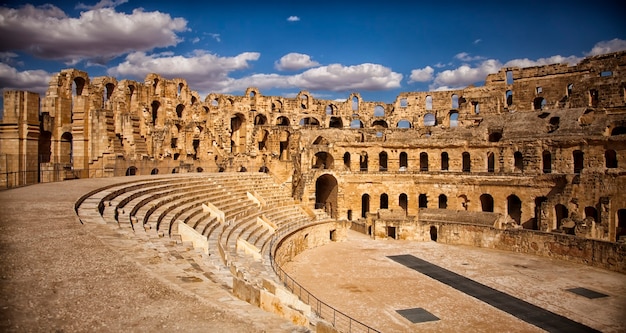
Contributions to World Heritage
Several sites within the subcontinent have earned recognition as UNESCO World Heritage Sites. These include the awe-inspiring Angkor Wat in Cambodia and the historical city of Bhaktapur in Nepal. These sites not only showcase the subcontinent’s heritage but also contribute to the global heritage of humanity.
Music, Dance, and Art
Artistic expressions have thrived throughout the subcontinent’s history. Classical music and dance forms like Indian classical music, Bharatanatyam, and Kathak have enchanted audiences for centuries. Artisans have produced intricate handicrafts that tell tales of cultural heritage.
Cuisine: A Fusion of Flavors
The subcontinent’s cuisine is a tantalizing blend of flavors and spices. From aromatic biryanis to delectable curries, each dish tells a story of culinary expertise passed down through generations.

Festivals and Celebrations
Festivals in the subcontinent are vibrant, colorful, and exuberant affairs. Diwali, Eid, Holi, and many more festivals celebrate the diversity of cultures and religions, uniting people in joyous celebrations.
Conclusion
The untold stories of Asia’s subcontinent are like a treasure trove waiting to be discovered. From ancient civilizations to modern wonders, the journey through time and culture reveals the remarkable tapestry of this diverse and enchanting region. As we cherish and learn from these stories, let us remember that the past is not just history; it is the foundation upon which our present and future are built.
FAQs
1. Is the Taj Mahal a UNESCO World Heritage Site?
Yes, the Taj Mahal is one of the most iconic UNESCO World Heritage Sites in Asia’s subcontinent. It is a symbol of love and architectural marvel.
2. Which ancient civilization existed in the subcontinent?
The Indus Valley Civilization was one of the earliest and most sophisticated ancient civilizations in the subcontinent.
3. What is the significance of the Ramayana and the Mahabharata?
The Ramayana and the Mahabharata are epic poems that hold great cultural and religious significance in the subcontinent. They contain valuable life lessons and moral teachings.
4. What is the Silk Road, and why is it important?
The Silk Road was an ancient network of trade routes that facilitated cultural exchange between Asia’s region and the rest of the world. It played a crucial role in fostering cultural diversity and economic prosperity.
5. What are some famous dance forms from the continent?
Bharatanatyam, Kathak, Odissi, and Kathakali are some of the renowned classical dance forms that originate from this region.
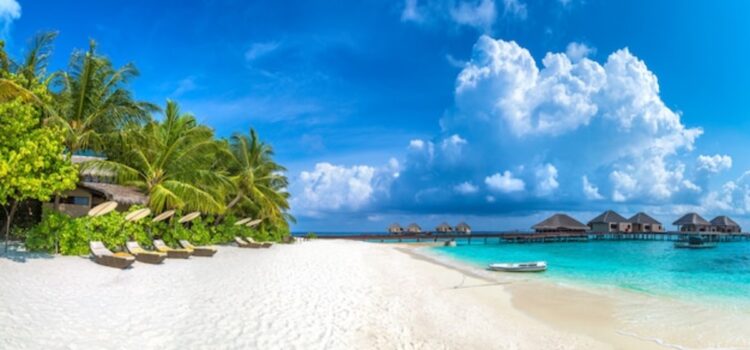
Are you dreaming of pristine white sands, crystal-clear turquoise waters, and breathtaking views? Look no further! In this article, we will take you on a virtual journey to the 10 most beautiful and exotic beaches in the world, where you can experience the ultimate relaxation. Whether you’re a sun worshipper, an adventure enthusiast, or simply seeking tranquility, these stunning beach destinations will captivate your senses and leave you rejuvenated. So, pack your sunscreen, put on your shades, and let’s dive into paradise!
Imagine soft sands between your toes, warm sun kissing your skin, and the soothing sound of waves lulling you into a state of pure bliss. Beaches have long been cherished as nature’s havens, offering an escape from the hustle and bustle of everyday life. In this article, we will unveil the top 10 most beautiful and exotic beaches that offer a perfect combination of serenity, natural beauty, and adventure.
#mostbeautifulbeaches
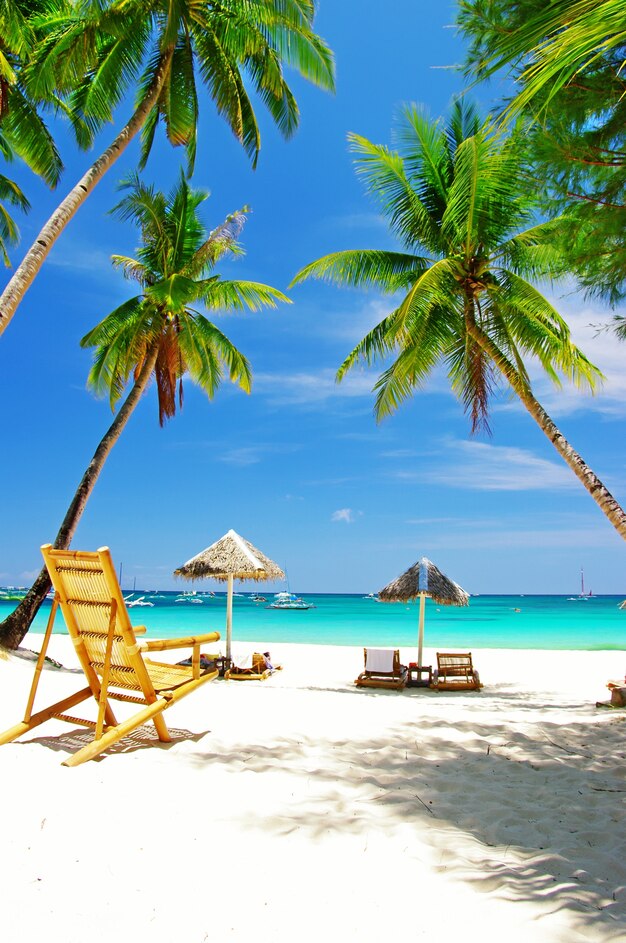
2. Bora Bora, French Polynesia: The Jewel of the South Pacific
Bora Bora is a dreamlike island nestled in the French Polynesia. Renowned for its overwater bungalows, vibrant coral reefs, and turquoise lagoons, it’s a destination straight out of a postcard. With its secluded beaches and luxurious resorts, Bora Bora is the epitome of paradise.
most beautiful beaches
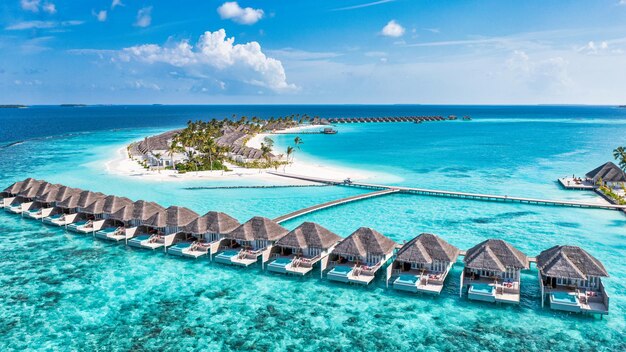
3. Maldives: Tropical Haven in the Indian Ocean
The Maldives is an archipelago of stunning islands located in the Indian Ocean. Each island boasts its own unique beauty, from powdery white sands to vibrant coral gardens. With its unrivaled luxury resorts and abundant marine life, the Maldives offers a truly unforgettable beach experience.
most beautiful beaches
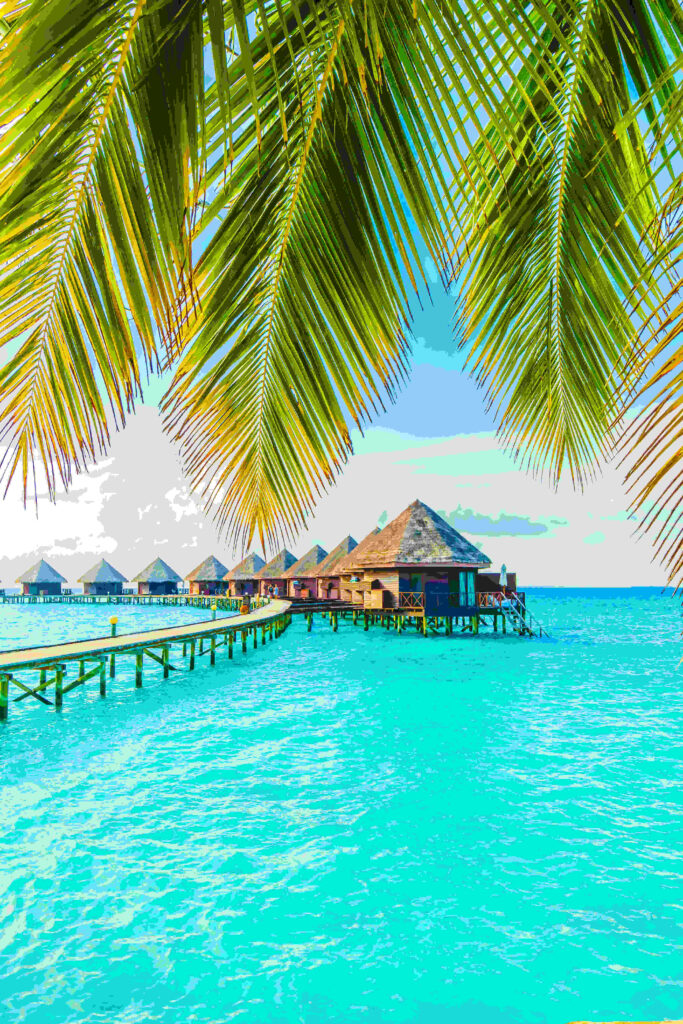
4. Seychelles: Pristine Beauty in the Heart of the Indian Ocean
These islands are blessed with untouched beauty, lush tropical forests, and some of the world’s most breathtaking beaches. Anse Lazio and Anse Georgette are just a few examples of the Seychelles’ natural wonders.
most beautiful beaches
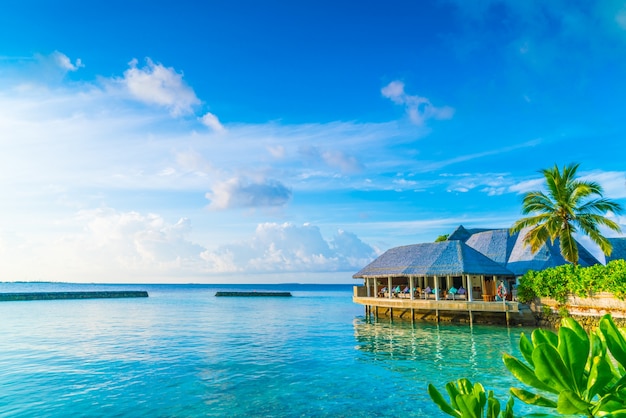
5. Phi Phi Islands, Thailand: A Slice of Paradise
Phi Phi Islands in Thailand have gained international fame for their unparalleled beauty. Surrounded by towering limestone cliffs, these islands boast clear turquoise waters teeming with vibrant marine life. Maya Bay, made famous by the movie “The Beach,” is a must-visit spot on Phi Phi Islands.
most beautiful beaches
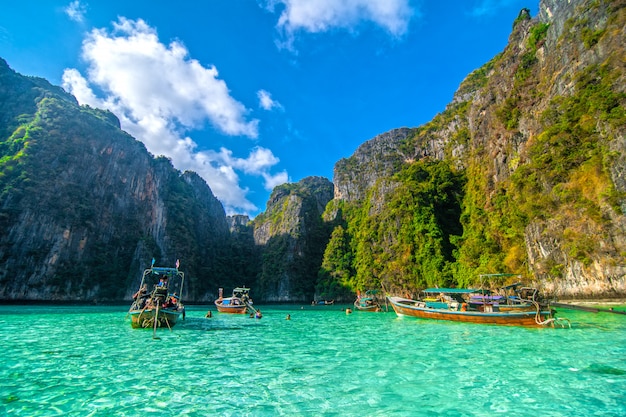
6. Navagio Beach, Zakynthos, Greece: Shipwrecked Beauty
Enclosed by towering cliffs and accessible only by boat, this secluded beach is home to a shipwreck that adds a touch of mystery to its breathtaking beauty. The crystal-clear waters and the dramatic landscape make Navagio Beach a true hidden gem.
most beautiful beaches
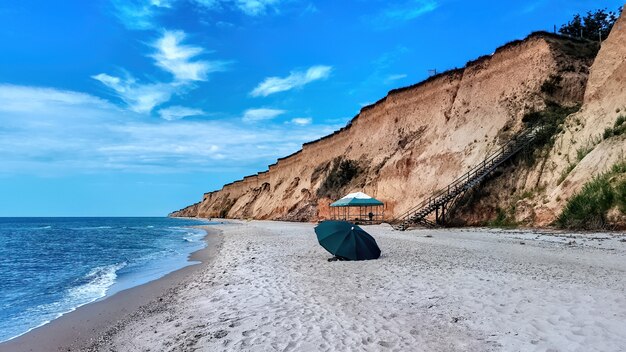
7. Whitehaven Beach, Whitsunday Islands, Australia: Pure Whiteness
Whitehaven Beach in the Whitsunday Islands of Australia is renowned for its pure white silica sands. The contrast between the crystal-clear waters and the blinding white sand creates a mesmerizing sight. Take a stroll along the beach, snorkel in the Great Barrier Reef, or simply relax and soak up the natural beauty of this Australian gem.
most beautiful beaches
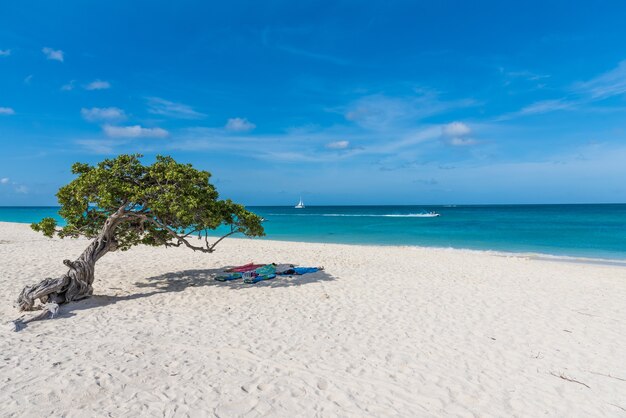
8. Anse Source d’Argent, Seychelles: Nature’s Masterpiece
Anse Source d’Argent is a star attraction in the Seychelles, known for its striking beauty and surreal landscape. This picturesque beach features granite boulders, turquoise waters, and powder-soft sands, making it a paradise for photographers and beach enthusiasts alike.
most beautiful beaches
9. Tulum, Mexico: Ancient Ruins and Azure Waters
Tulum in Mexico is a unique beach destination that seamlessly blends history and natural beauty. Explore the ancient Mayan ruins overlooking the Caribbean Sea, and then unwind on the stunning beaches with their powdery white sands and crystal-clear waters. Tulum offers a perfect blend of culture, history, and relaxation.
most beautiful beaches
10. The Hamptons, New York, USA: Beach Bliss with a Touch of Luxury
Located on Long Island’s South Fork, the Hamptons is a beloved summer destination for New Yorkers. With its picturesque villages, celebrity sightings, and pristine beaches, the Hamptons offer a perfect combination of relaxation and sophistication. From Southampton to Montauk, each beach in the Hamptons has its own charm and unique atmosphere.
most beautiful beaches
Conclusion: Discover Your Perfect Beach Getaway
Whether you prefer the secluded tranquility of Bora Bora, the awe-inspiring marine life of the Maldives, or the dramatic beauty of Navagio Beach, the world offers an array of breathtaking beaches for your ultimate relaxation. From tropical paradises to hidden gems, these 10 destinations provide the perfect setting to unwind, recharge, and create unforgettable memories.
FAQs (Frequently Asked Questions)
Q1. What is the most beautiful beach in the world?
Ans. Beauty is subjective, but some of the most stunning beaches include Bora Bora in French Polynesia, the Maldives, and Navagio Beach in Zakynthos, Greece.
Q2. Are these beaches safe for swimming?
Ans. Yes, these beaches are generally safe for swimming. However, it’s always advisable to adhere to local safety guidelines and be aware of any potential hazards.
Q3. Can I visit these beaches on a budget?
Ans. While some of these destinations are associated with luxury, there are often more affordable options available. Research accommodations, flights, and activities in advance to find the best deals.
Q4. Are these beaches crowded with tourists?
Ans. The level of crowding varies depending on the time of year and popularity of the destination. It’s recommended to visit during the off-peak season for a more peaceful experience.
Q5. What activities can I enjoy besides sunbathing?
A5. These beaches offer a wide range of activities, including snorkeling, scuba diving, water sports, hiking, and exploring local culture and cuisine.
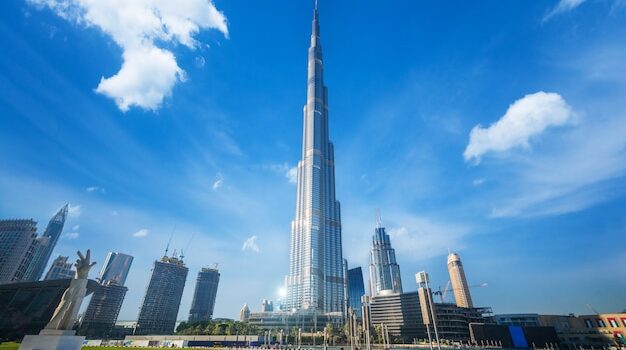
The Burj Khalifa stands tall and proud as an architectural marvel, dominating the skyline of Dubai. This towering skyscraper is not only an engineering masterpiece but also a symbol of human ambition and innovation. Let’s delve into the fascinating world of the huge structure and discover 40 intriguing facts about this iconic structure.
Burj Khalifa holds the title of the tallest building in the world with the height of 828 meters (2717 feets). Its design draws inspiration from Islamic architecture, with its sleek and slender structure tapering as it reaches towards the sky.
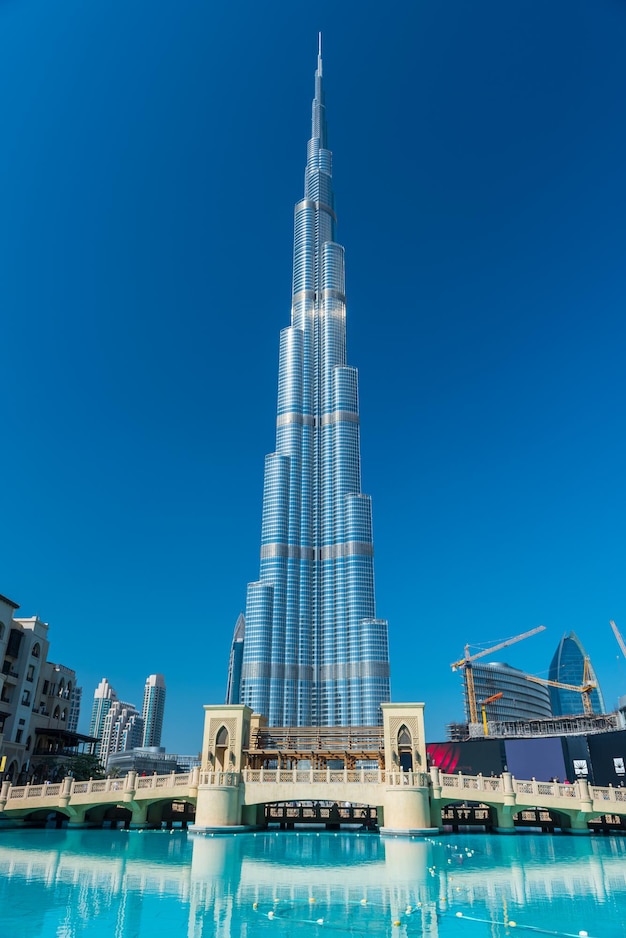
2. Architectural Marvel:
Designed by the renowned architectural firm Skidmore, Owings & Merrill, this building is a testament to human ingenuity. Its sleek lines, innovative engineering, and attention to detail have garnered worldwide acclaim.
3. Records and Achievements:
This gigantic structure has set several world records, including the highest occupied floor, the highest outdoor observation deck, and the elevator with the longest travel distance. It stands as a true testament to human achievement.
4. Observation Deck:
Located on the 148th floor, the Burj Khalifa’s observation deck offers breathtaking panoramic views of Dubai’s skyline and the Arabian Gulf. Standing at a height of 555 meters (1,821 feet), it provides an unparalleled experience for visitors.
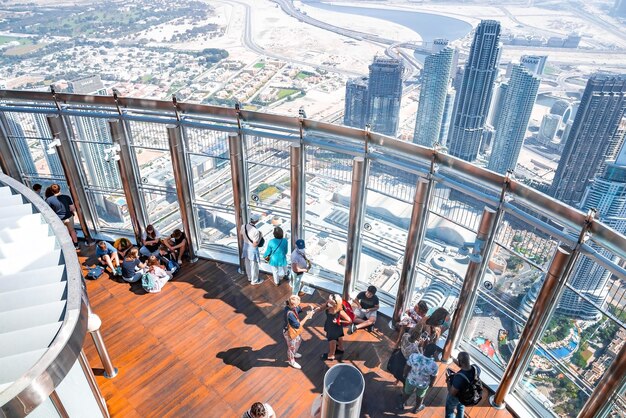
5. Lighting and Illumination:
This building comes alive at night with a mesmerizing lighting display. Over 1.2 million LED lights adorn the exterior, creating a stunning visual spectacle that illuminates the Dubai skyline.
6. Sustainability Features:
Despite its immense size, it incorporates sustainable features. It employs advanced cooling systems, utilizes solar panels for energy generation, and collects condensation to irrigate the surrounding landscape.
7. Elevators and Vertical Transportation:
This structure boasts high-speed elevators that transport visitors to great heights within seconds. Equipped with cutting-edge technology, these elevators offer a smooth and swift journey to the upper floors.
8. Art and Design:
Artistic elements can be found throughout this building’s interior spaces. Stunning sculptures, installations, and artwork by renowned artists enrich the visitor experience, adding a touch of visual delight.
9. Notable Events:
This structure has hosted numerous memorable events, including breathtaking New Year’s Eve fireworks displays and stunning light shows. These spectacles leave spectators in awe of its grandeur.
10. Presence in Pop Culture:
The striking presence of the Burj Khalifa has made it a popular filming location for movies and music videos. It has appeared in films like “Mission: Impossible – Ghost Protocol” and has served as a backdrop for mesmerizing performances by renowned artists.
11. Skyscraper Engineering:
The construction of this building pushed the boundaries of skyscraper engineering. Innovative techniques, such as the use of high-strength concrete and a unique “buttressed core” structural system, were employed to ensure stability and strength.
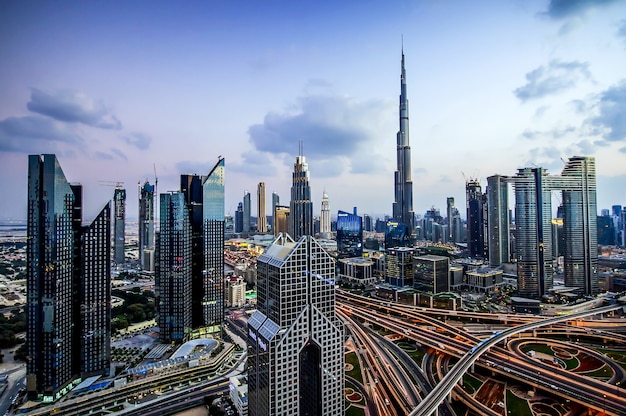
12. Iconic Skyline Addition:
This structure’s towering presence has become synonymous with Dubai’s modern skyline. It complements other architectural marvels like the Palm Jumeirah and the Burj Al Arab, solidifying its place as an iconic addition to the cityscape.
13. The Experience:
A visit to this gigantic structure is a sensory journey like no other. From the awe-inspiring views from the observation deck to the luxurious amenities within, it offers a glimpse into the lavish lifestyle and innovative spirit of Dubai.
14. Impact on Tourism and Economy:
It has become a major tourist attraction, drawing visitors from around the globe. Its popularity has significantly contributed to Dubai’s tourism industry and played a vital role in boosting the city’s economy.
15. Cultural Landmark:
It has emerged as a cultural landmark, symbolizing Dubai’s rise as a global city. It represents the city’s forward-thinking vision and its ability to achieve the seemingly impossible.
16. Sky-High Dining:
This building is home to world-class dining establishments. Visitors can enjoy culinary delights while relishing breathtaking views of the cityscape, creating an unforgettable dining experience.
17. Sky-High Residential Living:
This building houses luxury residential apartments, offering residents a truly exclusive and unparalleled living experience. The stunning views and top-notch amenities make it an address of prestige.
18. Iconic Architecture Tours:
Dubai’s architectural enthusiasts can embark on specialized tours that explore it and other iconic structures. These tours provide insights into the vision, engineering, and design behind these architectural wonders.
19. Burj Khalifa Souvenirs:
Visitors can take home a piece of it by purchasing souvenirs available at the building’s gift shops. From miniature replicas to artistic memorabilia, these souvenirs serve as cherished mementos of the Burj Khalifa experience.
20. The Light Shows:
The exterior of the this building becomes a canvas for spectacular light shows on special occasions. These light shows combine choreographed lighting effects with music, creating a mesmerizing display that captivates audiences.
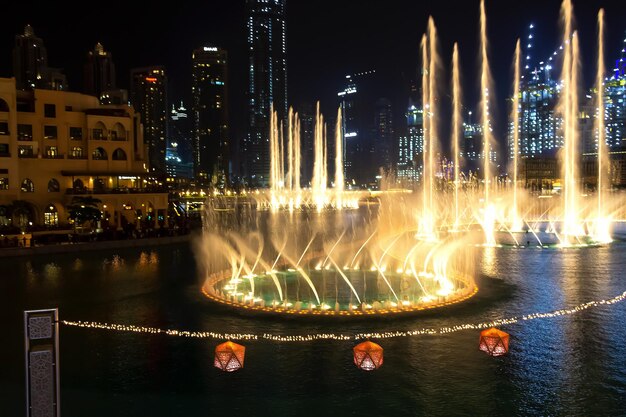
21. World-Class Fireworks:
This building is synonymous with dazzling fireworks displays, particularly during New Year’s Eve celebrations. These awe-inspiring fireworks showcase Dubai’s penchant for grandeur and provide a magical experience for spectators.
22. Skyscraper-View Accommodations:
Dubai offers a range of hotels and accommodations with stunning views of this building. Guests can wake up to the sight of this architectural wonder, enhancing their stay and creating lasting memories.
23. Sky-High Fitness Facilities:
The Burj Khalifa boasts state-of-the-art fitness facilities for residents and visitors. Gyms, swimming pools, and wellness centers provide opportunities for fitness enthusiasts to stay active while enjoying unparalleled views.
24. The Iconic Spire:
The spire atop it is not merely decorative; it serves as a functional element. It provides lightning protection and houses essential mechanical and communication equipment.
25. Iconic Photo Opportunities:
This structure offers numerous photo opportunities for visitors. From capturing the building’s magnificent exterior to posing against the backdrop of the Dubai skyline, these photos become cherished memories.
26. Awe-Inspiring Sunsets:
Watching the sunset from this building is a surreal experience. As the sun dips below the horizon, it casts an ethereal glow over the city, creating a breathtaking vista that leaves a lasting impression.
27. The Burj Khalifa’s Vertical Gardens:
Vertical gardens can be found within the Burj Khalifa, adding a touch of nature to the interior spaces. These green spaces provide a refreshing oasis amidst the urban environment.
28. Engineering Feats:
The construction of the Burj Khalifa involved groundbreaking engineering techniques. It required immense planning, innovative solutions, and the expertise of engineers from around the world.
29. Cultural Celebrations:
The Burj Khalifa serves as a focal point for cultural celebrations, particularly during significant events and festivals. It becomes a canvas for projections, light displays, and messages that reflect the spirit of the occasion.
30. Burj Khalifa at Sunrise:
Witnessing the sunrise from the Burj Khalifa is a magical experience. As the first rays of light paint the sky with hues of gold and orange, the city awakens, offering a serene and awe-inspiring sight.
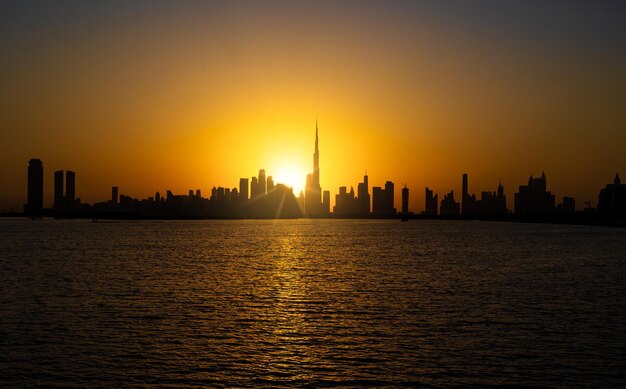
31. Sky-High Business Opportunities:
The Burj Khalifa houses a range of business facilities, including office spaces and conference rooms. Its prestigious address and world-class amenities attract global businesses, creating a thriving business community within its walls.
32. The Burj Khalifa’s Iconic Address:
The Burj Khalifa’s address, 1 Sheikh Mohammed bin Rashid Boulevard, has become synonymous with luxury and exclusivity. It represents a premier location that embodies Dubai’s vision of sophistication and elegance.
33. Vertical Transportation Innovations:
The Burj Khalifa’s elevators utilize cutting-edge technology to transport visitors swiftly and seamlessly to their desired floors. These vertical transportation systems showcase the latest advancements in elevator engineering.
34. Burj Khalifa’s Impact on Skyline Design:
The Burj Khalifa’s iconic presence has influenced the design of skylines in cities worldwide. Architects and developers aspire to create structures that leave a lasting impression, drawing inspiration from the Burj Khalifa’s grandeur.
35. Sky-High Wedding Venues:
The Burj Khalifa provides unique wedding venues for couples seeking a truly remarkable setting for their special day. Exchanging vows against the backdrop of the Dubai skyline creates an unforgettable wedding experience.
36. Burj Khalifa Time-Lapse Videos:
Numerous time-lapse videos capture the Burj Khalifa’s construction, showcasing its rise from a mere blueprint to an awe-inspiring structure that redefines what is possible in architectural design and engineering.
37. A Symbol of Dubai’s Aspirations:
The Burj Khalifa embodies Dubai’s vision and aspirations for the future. It symbolizes the city’s ambition to push boundaries, achieve greatness, and become a global hub of innovation and excellence.
38. World-Class Shopping:
Within the Burj Khalifa lies a collection of high-end boutiques and luxury stores, offering a world-class shopping experience. From designer fashion to exquisite jewelry, visitors can indulge in retail therapy amidst architectural splendor.
39. Burj Khalifa’s Influence on Skyline Photography:
The Burj Khalifa has become an iconic subject for photographers around the world. Its unique silhouette and towering height present endless opportunities for capturing stunning skyline photographs.
40. The Burj Khalifa’s Ever-Evolving Legacy:
As Dubai continues to grow and evolve, the Burj Khalifa remains an everlasting symbol of the city’s progress. Its legacy as a global icon will continue to inspire future generations and shape the skyline of tomorrow.
41. Mission Impossible Series:
In the fourth installment of the Mission Impossible series, titled “Ghost Protocol,” Tom Cruise took on a daring and death-defying stunt that would forever be etched in cinematic history. Scaling the exterior of the Burj Khalifa, the world’s tallest building, Cruise mesmerized viewers with his fearless performance.
42. The inclusion of the Burj Khalifa stunt in “Ghost Protocol” significantly boosted Dubai’s tourism industry. Movie enthusiasts and thrill-seekers alike flocked to the city to witness the iconic landmark that played a pivotal role in the exhilarating Mission: Impossible sequence. The stunt put Dubai on the map as a must-visit destination for film and adventure enthusiasts.
Conclusion:
In conclusion, the Burj Khalifa is not just a building; it’s a testament to human imagination, engineering prowess, and the relentless pursuit of excellence. Its awe-inspiring presence has left an indelible mark on Dubai’s skyline and captivated the world. Exploring its incredible facts only deepens the appreciation for this architectural wonder that stands as a testament to what humankind can achieve.
FAQs
Ans. Burj Khalifa is open to the public. Visitors can access the observation decks on the higher floors and experience the breathtaking views of Dubai.
Ans. The Burj Khalifa is currently the tallest skyscraper in the world, standing at a height of 828 meters (2,717 feet). It surpasses other famous skyscrapers like the Shanghai Tower and the Abraj Al-Bait Clock Tower.
Ans. Yes, dining options are available at the Burj Khalifa. The tower features several world-class restaurants and lounges where visitors can enjoy exquisite cuisine while admiring the stunning views of Dubai.
Ans. The construction of the Burj Khalifa took approximately six years. It began in 2004 and was completed in 2010, with the official opening taking place on January 4, 2010.
Ans. Dubai is home to several other famous buildings, including the Burj Al Arab, a luxurious sail-shaped hotel; the Palm Jumeirah, an artificial island in the shape of a palm tree; and the Dubai Marina, a stunning waterfront development.
Ans. Yes, Tom Cruise indeed climbed the Burj Khalifa for a scene in the movie “Mission: Impossible – Ghost Protocol.” While safety measures were in place, Cruise personally performed the climb, showcasing his commitment to realistic stunts.
Ans. The Burj Khalifa stands at a height of 828 meters (2,717 feet), making it the tallest building in the world. Its remarkable height has become an iconic feature of the Dubai skyline.
Ans. The inclusion of the Burj Khalifa stunt in the movie “Mission: Impossible – Ghost Protocol” garnered significant attention and publicity for the tower. The thrilling scene featuring Tom Cruise climbing the Burj Khalifa showcased its grandeur and captivated audiences worldwide, increasing its popularity and drawing more tourists to Dubai.
Comments
Here are 10 World’s Largest Cruise Ships
Here are 10 World’s Largest Cruise Ships
From Love to Longing: 10 Surprising Reasons of Marital Disconnection
Unveiling the Surprising facts about Zulfiqar Ali Bhutto
Unveiling the Surprising facts about Zulfiqar Ali Bhutto